Do you have a stiff back? Do you find difficulties in turning or bending in one or both directions? If yes, you might have back pain problems. Back pain is recognized as a sharp pain that you may feel in your back or spine. Back pain may be categorized as neck pain (cervical spine), upper back pain (thoracic spine), lower back pain (lower part of the spine), and tailbone pain. Most people experience back pain at some point in their life. The occurrence of back pain becomes more common after twenty-five years of age in both men and women. It can be felt as a sharp pain, spasm or ache in the back. Back pain may impact different people differently. Apart from the obvious physical discomfort, it may lead to mental troubles such as irritation and short-temper1.
Therefore, we bring you a few natural remedies for back pain, which you can carry out at home. So, read along to find the natural remedies for back pain.
Most people experience generalized back pain, which might result from a range of different factors such as:
The best patient education that can be provided to prevent back pain is to maintain a healthy body weight with a body mass index (BMI) less than 25, as higher BMI correlates with worse outcomes Patients of all ages should avoid smoking as it increases rates of back pain in all ages
Dr. M.G. Kartheeka, MBBS, MD(Pediatrics)
You might experience the following symptoms if you have back pain.
Here are a few home remedies for back pain that you may try.
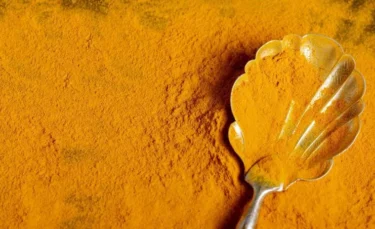
Turmeric is easily available in your kitchen and has been used in traditional medicine for centuries. The main bioactive compound of turmeric curcumin may have anti-inflammatory properties, which might be beneficial for reducing pain in the body2.
Turmeric milk might be a good home remedy for back pain. Add one teaspoon of turmeric powder to half a cup of milk (hot/cold) and mix it well. Add some honey for sweetness if needed. Drink this turmeric milk at night for possible relief from back pain.

Ginger is the most common spice found at home. It is used for culinary purposes. Ginger might be used as an instant remedy for back pain. Ginger contains bioactive chemicals such as zingerone and gingerol. These compounds may have anti-inflammatory activities that might help decrease the pain2.
Ginger tea might be a beneficial backache home remedy. To make ginger tea, take a small piece of ginger root wash and remove the peel. Next, you can slice or grate ginger and add it to boiling water. Cool and strain the ginger after letting it boil for about ten minutes. Finally, add honey or lemon juice if you need it.
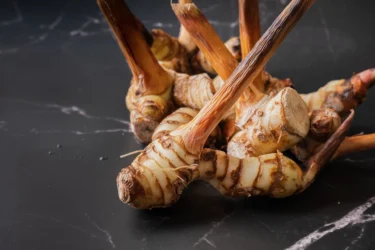
Galangal may be used as a home remedy for back pain because it might have anti-inflammatory properties2. Galangal tea may provide a back pain solution at home. To make galangal tea, add a small piece of crushed galangal root to any tea of your choice, and boil them together in water for few minutes. Then, strain the tea, add sugar or honey and drink this tea in the morning and evening for quick back pain relief.
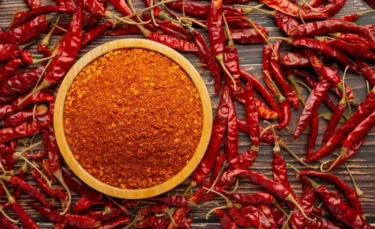
Cayenne pepper may have the ability to decrease the level of pain-causing neurotransmitters in the body. In addition, the active compound of cayenne pepper called capsaicinoids may have the ability to reduce pain. In various human trials3 conducted by Keitel et al. 2001, cayenne pepper preparations showed a reduction in pain when used in topical plaster. You can purchase the ready-to-use Cayenne plaster tapes, which might give you fast relief from back pain.
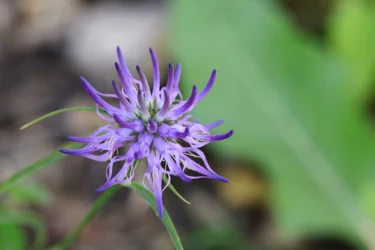
Devil’s claw may have analgesic and anti-inflammatory properties. It may be an effective painkiller and help reduce back pain3.
Devil’s claw tea might be beneficial for back pain. To make this tea, boil the dried root bark of the devil’s claw in water for 15-20 minutes. Allow this preparation to brew properly. You will notice a unique spicy aroma. Drinking the tea might give fast relief from back pain.
Also Read: Natural Home Remedies for Leg Pain
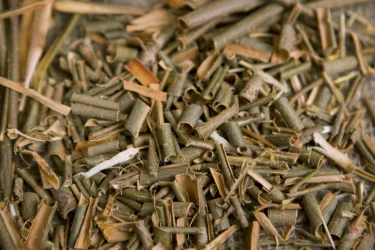
White willow bark might be considered an analgesic herb that may help relieve back pain3,4. White willow bark can be consumed in the form of tea. To prepare willow bark tea, add one to two teaspoons of white willow bark pieces in water and let it boil for five to ten minutes. Once boiled, turn off the heat and allow it to steep for about 30 minutes. Drink this tea as required.

Lavender flowers may be used as herbal sedatives (induce calmness) that help reduce stress and decrease muscle tension4. You may use lavender essential oil for back pain. Before using it, you should make sure to dilute the lavender essential oil with any other oil of your choice (coconut oil). Applying to the affected regions will provide instant relief for back pain.

Black cohosh root may have an antispasmodic activity and may relieve muscle spasms, may reduce pain and may have a sedative (soothing) effect4. Black cohosh root tea may be a beneficial home remedy for back pain. To make this tea, take black cohosh roots and add them to boiling water and then allow it to simmer for 20-30 mins until the liquid is reduced. Drink this tea to relieve your back pain.

The best home remedies for back pain might be making changes in our daily lives,
Back pain may be reduced by heat and cold therapy (such as the application of hot water bottles and ice packs). Keeping a healthy weight may also help manage back pain1.
Though studies show the benefits of the given herb and home remedies for back pain, these are insufficient. Therefore, there is a need for large-scale human studies to establish the true extent of the benefits of these home remedies on human health. Thus, these should only be taken cautiously and never as a substitute for medical treatment.
Severe low back pain if unresolved on its own within 3-4 weeks would surely need a medical opinion and might benefit from ultrasound and interferential therapy by a physiotherapist.
Dr. Ashish Bajaj, M.B.B.S., M.D. in Clinical Pharmacology and Toxicology
Back pain might resolve in a few weeks in most people with adequate self-care. Nine out of ten people might recover from back pain after two months. However, if the condition gets worse, seek medical help.1 Immediate medical attention is necessary in the following conditions:
If you have osteoporosis (weak bones)1. You should not depend on home remedies alone for the treatment of back pain. You need to consult a qualified doctor for advice if the symptoms do not improve with home remedies.
Back pain is a form of pain that might result from straining joints, ligaments and muscles. The early signs of back pain may include rapid pain, stiffness, numbness, tingling and spasm. Back pain may be avoided by modifying lifestyle patterns including regular exercising which can include walking, swimming, yoga, etc. Back pain can also be prevented by maintaining a healthy weight and introducing short breaks for relaxation in the daily routine. You may also try some ayurvedic home remedies such as ginger, turmeric, etc., which might give you instant back pain relief. However, if the condition continues for longer, consult a qualified professional to avoid more complications.
Also Read: Effective Home Remedies For Heel Pain
The precautions to manage back pain include lifestyle changes. Regular exercising like walking and swimming, weight training, yoga, pilates, maintaining good posture and a healthy weight, reducing stress and muscle tension and better relaxation might be helpful to manage back pain.
Back pain may be managed by physical exercises, chiropractic, physiotherapy and acupuncture. Medications such as non-steroidal anti-inflammatory drugs (NSAIDs) might be used to reduce the pain but with its side effects. Therefore, before trying any alternative methods, it is best to consult a specialist.
Different therapies such as herbal medicine, laser therapy, ultrasound, heat and cold therapy, and electrotherapy may be used for back pain. Therefore, if you have back pain problems, consult a doctor and ask for advice before trying these therapies.
Doctors will examine your back pain and might ask you the following questions:
How would you describe the pain?
Is there tingling or numbness?
What activities were you doing before the back pain started?
When did the back pain start?
What makes the pain worse or better?
1. Back pain [Internet]. Health direct. 2020 [cited 2022 Jul 11]. Available from: https://www.healthdirect.gov.au/back-pain
2. Lakhan SE, Ford CT, Tepper D. Zingiberaceae extracts for pain: a systematic review and meta-analysis. Nutrition Journal. 2015;14(50):1–10. Available from: https://www.ncbi.nlm.nih.gov/pmc/articles/PMC4436156/pdf/12937_2015_Article_38.pdf
3. Peppin JF, Pappagallo M. Capsaicinoids in the treatment of neuropathic pain: a review. Ther Adv Neurol Disord. 2014 Jan;7(1):22-32. doi: 10.1177/1756285613501576. PMID: 24409200; PMCID: PMC3886382. Available from: https://pmc.ncbi.nlm.nih.gov/articles/PMC3886382/
4. Garner-Wizard M, Henson S, Milot B, Oliff HS, Oppel M, Rapp C, et al. Herbs in the Treatment of Back Pain. Ameri Botanic Counci. 2006;1–2. Available from: https://umb.herbalgram.org/media/kbghyimc/issue72.pdf
Disclaimer: The information provided here is for educational/awareness purposes only and is not intended to be a substitute for medical treatment by a healthcare professional and should not be relied upon to diagnose or treat any medical condition. The reader should consult a registered medical practitioner to determine the appropriateness of the information and before consuming any medication. PharmEasy does not provide any guarantee or warranty (express or implied) regarding the accuracy, adequacy, completeness, legality, reliability or usefulness of the information; and disclaims any liability arising thereof.
Links and product recommendations in the information provided here are advertisements of third-party products available on the website. PharmEasy does not make any representation on the accuracy or suitability of such products/services. Advertisements do not influence the editorial decisions or content. The information in this blog is subject to change without notice. The authors and administrators reserve the right to modify, add, or remove content without notification. It is your responsibility to review this disclaimer regularly for any changes.
We have all suffered from flu at some point in our lives. The fever, chills, and headache can make life difficult.
Flu, otherwise known as influenza, is caused by the influenza virus. It is a highly contagious disease. Although all age groups can catch this disease, it has serious effects on babies and the elderly particularly. Flu spreads through the body fluids such as saliva, mucous, etc., of the infected person. It is generally transferred when the infected person coughs or sneezes. The flu is a disease of the respiratory system, but it can affect the whole body1,2.
However, there are some simple remedies to manage your symptoms and be more comfortable. Continue reading to find out!
Flu is an infection caused by a virus called influenza. It occurs mostly in the winter season and is highly contagious. Flu can infect people of all ages. However, the following people are more prone to getting hospitalized with flu.
Star anise which is traditionally used as a spice in food, and also acts as a medicine in flu because it’s seeds contain chemicals that might have antibacterial effects. It also contains a chemical called shikimic acid, which is used to make oseltamivir (Tamiflu), a flu treatment.
Dr. M.G. Kartheeka, MBBS, MD(Pediatrics)
If you have flu, you may experience the following symptoms.
Pain in the chest or abdomen, confusion, vomiting or difficulty breathing or shortness of breath, if you experience any of these symptoms along with flu, it is recommended to visit a physician as soon as possible.
Dr. Ashish Bajaj, M.B.B.S., M.D. in Clinical Pharmacology and Toxicology
These herbs and remedies have properties to ease flu symptoms, but more research is still required to consolidate their use. Nevertheless, here are some remedies to help with flu symptoms at home.
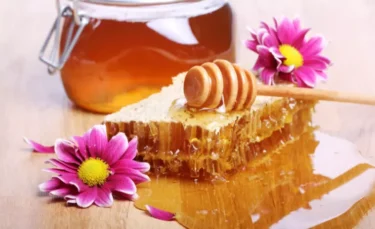
Using honey may help strengthen your immune system and fight viral infections. Honey may help kill the flu virus and protect the person against flu symptoms4. There are several recipes to try with honey. You can mix honey in a warm cup of green tea. Another remedy is drinking honey and lemon tea. Drinking warm water mixed with honey may help with a sore throat. However, avoid giving honey to children below one year.
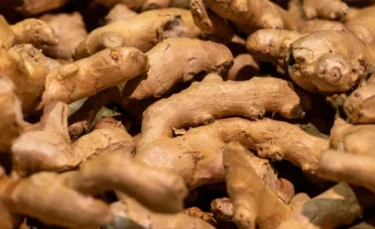
Ginger is a widely used medicinal plant across the world. It is included in the Ayurvedic, Chinese and Unani systems of traditional medicine. Using fresh ginger may help eliminate flu symptoms like a sore throat, fever and body ache5. One of the ways to use ginger for flu is to boil freshly sliced ginger in water. Let it simmer for some time. Drinking warm ginger water may help flu symptoms.
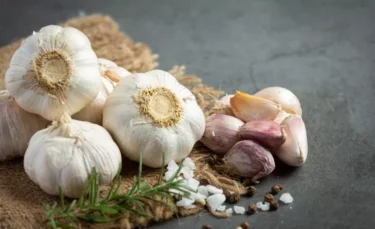
Garlic is known to help the body fight off infections and help destroy viruses by boosting immunity. This property may indicate that garlic might have a soothing effect on flu. Garlic may also help build lost strength. This acquired strength may help to fight off flu symptoms and counter fatigue associated with flu6. You can take garlic as a dietary supplement and add it to your food.
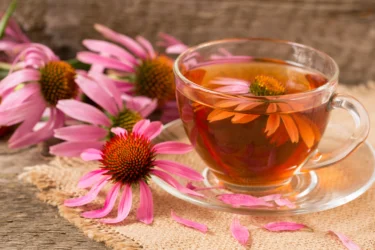
Echinacea is a medicinal plant commonly known as coneflower or American coneflower. It is often used as a nutritional supplement to help boost the immune system7. You can use fresh echinacea root or other parts to make tea. Drinking this tea may help you get some relief from flu symptoms. To prepare echinacea tea, you can place the leaves, flowers, and roots of an echinacea plant in a teacup and add boiling water to it. Let this mixture steep the tea as desired, then strain to remove the roots, flowers, and leaves.
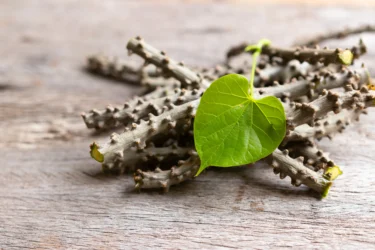
Guduchi juice may help with enhancing the immune system and defence mechanism. Together these properties may help fight off the flu symptoms. You can drink fresh guduchi juice to help get rid of flu symptoms8. You can make guduchi juice at home. Peel some fresh guduchi, and chop it into pieces. Blend the chopped guduchi with a glass of water. Strain this mixture and your guduchi juice is ready.

You need to get plenty of rest during flu recovery. Make sure to stay at home and get enough sleep and keep warm. It may help you recover sooner from the flu2,9. Resting may also help you regain your strength.

Make sure to drink plenty of fluids, especially water. It will help you recover quickly and avoid dehydration2,9. You can also drink warm chicken soup to help your sore throat and runny nose. You can also try to include foods that contain water in your diet.
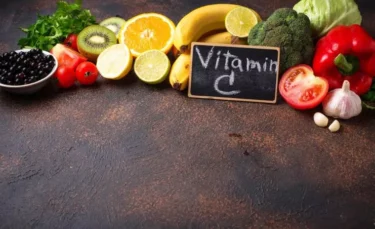
A deficiency of vitamin C may make you prone to infections due to impaired immunity. Likewise, vitamin C supplements may help fight infection by boosting the immune system10. You can involve foods in your diet that are rich in vitamin C, such as lemons, oranges, strawberries, tomatoes, kiwis, and grapefruit11.
Though studies show the benefits of the given herbs and home remedies for flu, these are insufficient. Therefore, there is a need for large-scale human studies to establish the true extent of the benefits of these home remedies on human health. Thus, these should only be taken cautiously and never as a substitute for medical treatment.
You must contact your healthcare provider as soon as you experience flu symptoms. It is important that you take flu medicines within 48 hours of experiencing symptoms2.
Consult a professional if the symptoms fail to improve with home remedies.
You must not rely on home remedies alone for flu treatment. Instead, you should consult a qualified doctor for advice on the condition if the symptoms do not improve with home remedies.
You may suffer from flu symptoms from time to time. Flu symptoms can hinder your work and daily activities and make life difficult. However, these herbs and home remedies like ginger, honey, garlic, guduchi and echinacea can help you manage your symptoms at home. If the home remedies don’t work out and you continue experiencing the symptoms, you need to reach out to your healthcare provider. Avoid relying solely on home remedies for flu treatment at home, and don’t hesitate to seek medical help.
You can use many herbs to get rid of flu symptoms at home. Natural remedies like ginger, honey, garlic, echinacea and guduchi may be used at home to help manage flu4,8. However, if the symptoms don’t improve with home remedies and you continue to experience symptoms, don’t hesitate to consult a healthcare provider.
You can manage your flu symptoms and speed up your recovery by getting plenty of rest and sleep. Hydrating yourself well may play a key role in helping you recover2,9. However, you can also reach out to your healthcare provider for help if the symptoms don’t improve.
You may use ginger to help with your flu symptoms. Ginger is a commonly found herb used as a remedy for several conditions. For example, ginger may help you with a sore throat, body ache, fever and pain5. However, more studies are needed to evaluate the usefulness of ginger in humans. You should consult your healthcare provider if your symptoms don’t improve after using ginger.
Herbs like ginger, garlic, and echinacea may help fight off cold and cough symptoms such as a sore throat. In addition, these herbs may boost the immunity that helps fight the infection causing cold and flu symptoms. Honey is also one of the natural ingredients that may help boost immunity and help overcome flu-related symptoms4,7. However, before using natural herbs for coughs and colds, you must consult your healthcare provider.
1. Flu (influenza) | Australian Government Department of Health and Aged Care [Internet]. [cited 2022 Jul 8]. Available from: https://www.health.gov.au/diseases/influenza-flu
2. Influenza (Flu): Treatment, Prevention, Symptoms vs Cold [Internet]. [cited 2022 Jul 8]. Available from: https://my.clevelandclinic.org/health/diseases/4335-influenza-flu
3. Influenza | Johns Hopkins Medicine [Internet]. [cited 2022 Jul 8]. Available from: https://www.hopkinsmedicine.org/health/conditions-and-diseases/influenza
4. P. Saranraj, S. Sivasakthi, Glaucio Dire Feliciano. Pharmacology of Honey: A Review. Advances in Biological Research [Internet]. 2016;10(4):271–89. Available from: https://www.researchgate.net/publication/308694961_Pharmacology_of_Honey_A_Review
5. Ali BH, Blunden G, Tanira MO, Nemmar A. Some phytochemical, pharmacological and toxicological properties of ginger (Zingiber officinale Roscoe): a review of recent research. Food Chem Toxicol [Internet]. 2008 [cited 2022 Jul 10];46(2):409–20. Available from: https://pubmed.ncbi.nlm.nih.gov/17950516/
6. Garlic – Health Encyclopedia – University of Rochester Medical Center [Internet]. [cited 2022 Jul 11]. Available from: https://www.urmc.rochester.edu/encyclopedia/content.aspx?contenttypeid=19&contentid=Garlic
7. Echinacea | NCCIH [Internet]. [cited 2022 Jul 11]. Available from: https://www.nccih.nih.gov/health/echinacea
8. Ayush Division. Ayurveda offering Herbal healing. Available from: https://esic.gov.in/attachments/publicationfile/7d11b02e5abb4717d53b4ce05efabd21.pdf
9. Flu – NHS [Internet]. [cited 2022 Jul 8]. Available from: https://www.nhs.uk/conditions/flu/
10. Carr AC, Maggini S. Vitamin C and Immune Function. Nutrients [Internet]. 2017 Nov 1 [cited 2022 Jul 11];9(11). Available from: https://pubmed.ncbi.nlm.nih.gov/29099763/
11. Vitamin C | The Nutrition Source | Harvard T.H. Chan School of Public Health [Internet]. [cited 2022 Jul 11]. Available from: https://www.hsph.harvard.edu/nutritionsource/vitamin-c/
Disclaimer: The information provided here is for educational/awareness purposes only and is not intended to be a substitute for medical treatment by a healthcare professional and should not be relied upon to diagnose or treat any medical condition. The reader should consult a registered medical practitioner to determine the appropriateness of the information and before consuming any medication. PharmEasy does not provide any guarantee or warranty (express or implied) regarding the accuracy, adequacy, completeness, legality, reliability or usefulness of the information; and disclaims any liability arising thereof.
Links and product recommendations in the information provided here are advertisements of third-party products available on the website. PharmEasy does not make any representation on the accuracy or suitability of such products/services. Advertisements do not influence the editorial decisions or content. The information in this blog is subject to change without notice. The authors and administrators reserve the right to modify, add, or remove content without notification. It is your responsibility to review this disclaimer regularly for any changes.
Strep throat can make your throat sore and scratchy, and it’s really not the best feeling to talk with a throat like that. Strep throat infection is a bacterial infection of the throat and tonsils and is caused by a group of bacteria called Streptococcus (group A strep).
Strep throat infection is common in children between the ages of five to fifteen years. Adults might also develop a strep throat. Rarely 1 in 10 adults with a complaint of the sore throat might actually have a strep throat. A strep throat infection is highly contagious and can be easily transmitted from an infected to a healthy person by inhaling contaminated air.
Let’s know more about some natural remedies for strep throat that might help you right in the comfort of your home.
Did you know?
Streptococcus species (Group A Streptococci) is the causative agent of strep throat. These bacteria are the natural flora that reside in our nose and throat. They are easily transferred from person to person and are highly contagious.
When an infected person speaks, coughs or sneezes, tiny respiratory droplets containing these bacteria are released from the mouth that contaminates the surrounding air. When a healthy person inhales this contaminated air, they might catch the infection. In this way, you can get a strep throat infection1.
The most common causes of strep throat are:
An effective remedy for streptococcal throat infection involves gargling a solution of betadine and water in addition to the prescribed antibiotics. If needed, doctors may also prescribe gargles with pain relief ingredients to ease the discomfort while swallowing.
Dr. Arpit Verma, MBBS, MD (Pharmacology)
Fever without cough and pain are the two main symptoms and signs of strep throat. It can be a mild infection, but people might experience a lot of pain. Some people may remain asymptomatic, meaning they do not show any symptoms of sore throat. These people are called “carriers” of infection and can still spread it to others1.
The most common strep throat symptoms are
Other symptoms of strep throat may be
Think you might have strep throat? Here’s what to do and what to expect during a doctor’s visit.
If you’ve had strep throat symptoms for more than a couple of days, it’s best to see a healthcare provider. Particularly if you have been around a strep throat sufferer.
Two main steps help identify if you have strep throat.
At first, your doctor will check for strep-related signs and symptoms. These include:
To confirm if it’s strep throat, your doctor will swab the back of your throat. Results can take up to two days.
Strep throat can be a mild infection, but its pain might lead to a discomforting feeling, If you are searching for how to cure strep throat naturally1.Here are some natural remedies for strep throat that you can try, which are easily available in your kitchen.
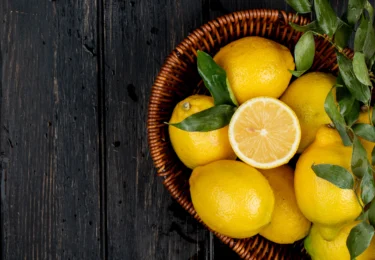
Lemons contain powerful antioxidants like vitamin C. It may act as an immunity booster. Lemon juice might be beneficial in breaking down the mucous-containing bacteria and providing pain relief. Lemons might also offer natural ways to heal a painful strep throat2.
You can use lemon juice as one of the home remedies for strep throat. Drinking warm water with one teaspoon of lemon juice might help you to relieve the throat pain2.

The best strep throat home remedies might just be honey. It may be due to the natural antibacterial properties and wound-healing action of honey. It may relieve the pain and inflammation associated with strep throat. According to a physician at Penn Medicine, honey may have the potential to kill bacteria and help fight infections2.
A few tablespoons of honey may be taken with warm water or tea. Drink this a couple of times a day to help ease the throat pain. It’s important to note that honey is not suitable for children under the age of one2.
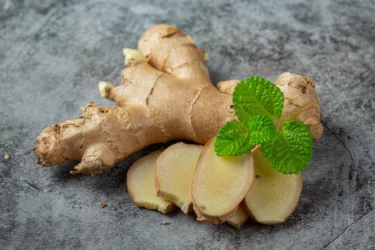
Ginger may have beneficial properties and may be used for sore throat remedies It contains valuable phytochemicals such as zingerone, paradols, shogaols, and gingerols. It may have antimicrobial, anti-inflammatory, and antioxidant properties3.
You can make ginger tea at home. Take some fresh ginger roots, crush and add them to boiling water. Give it a nice boil for a few minutes; strain the liquid and remove the used ginger before drinking. Your ginger tea is ready! Sip this as many times as you like each day. It will help in pain relief.
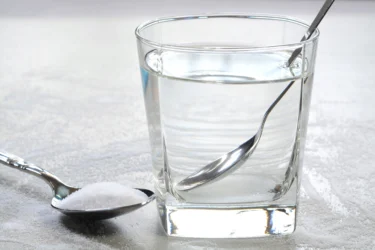
Salt water may be used as a part of strep throat self-care, serving as a natural remedy to alleviate the condition. It might not provide immediate relief; however, it may be useful for killing the bacteria causing strep throat. It might also help to loosen mucus and ease the pain. You can take some table salt in a glass of warm water, stir well, and use it to gargle2. You may use salt water to swish around your mouth for about a few seconds. Repeat this several times throughout the day until you are relieved of the pain.
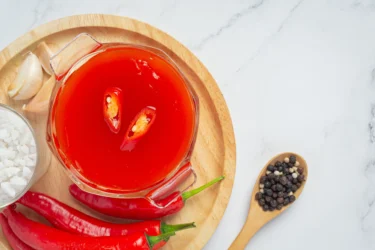
The hot sauce might be used to provide quick pain relief. Hot sauce is made from pepper which is high in capsaicin (an active compound). The hot sauce might be used to relieve strep throat. You can add a few drops of hot sauce into warm water and use it to gargle. The capsaicin in the hot sauce may provide pain relief and reduce inflammation2.

Herbal tea such as green tea, clove, chamomile, raspberry, and peppermint tea might be the best option for strep throat treatment at home. The beneficial effect of green tea is due to its polyphenol content, mainly catechins. Green tea and clove tea may have antibacterial and antioxidant activities. Peppermint, raspberry, and chamomile tea may help relieve the pain and reduce inflammation. Peppermint tea may help numb the throat and reduce pain.
In addition, chamomile tea might be a natural lubricant and may help to overcome hoarseness in voice4.
You can easily make green tea at home. Buy locally available green tea in the form of leaves or a tea bag. Add the loose leaves or a tea bag in boiling water. Allow it to boil for a few minutes and use the water after straining the leaves. Your green tea is ready to be served. Drink it a few times a day for best results.
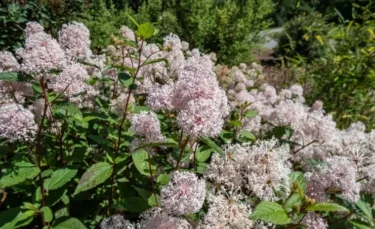
Red root might be one of the best herbal remedies for strep throat. The red root may have an antibacterial effect. It might help overcome the scratchiness associated with strep throat. It may be used as a herb to manage strep throat in people who do not prefer antibiotics. Red root might be effective for swollen lymph glands and inflamed throat tissues. You can use the herbal mixture of the red root. It can be diluted in water and either swallowed or gargled a few times each day5.
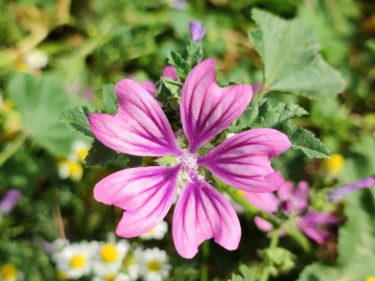
Marshmallow or Mallow species are flowering plants scientifically known as Althaea officinalis. Acold infusion of marshmallows may be one of the best home remedies for strep throat in children. The cold infusion can be sipped in small doses if you feel the slightest hint of a scratchy throat5.
You can prepare a pint of cold infusion of marshmallows by adding a few tablespoons of the ground herb in a cloth bag to a pint jar filled with cold water. Let the infusion sit overnight and remove the bag in the morning you can refrigerate the cold infusion and use as and when needed5.
Though there are studies that show the benefits of the herbs mentioned above and home remedies in the condition, these are insufficient. Therefore, there is a need for further studies to establish the true extent of the benefits of these herbs and home remedies for strep throat treatment. Thus, these should be taken with caution and never as a substitute for medical treatment.
Make an appointment with your doctor if your throat infection refuses to get better even after trying the home remedies2. You should seek medical attention if your strep throat is accompanied by
These might be the signs of developing a serious illness2.
You must not rely on home remedies alone for strep throat treatments. You should always consult a qualified doctor for treatment of strep throat infection if the symptoms don’t improve.
Let’s shine a light on the possible pitfalls and ways to prevent them.
Your chances of getting strep throat rise if you’re near a person with strep throat.
Keeping clean and staying away from someone with strep throat can help dodge the infection.
These habits can fend off strep throat:
Avoid being near a strep throat sufferer at least till they’ve been on antibiotics for a day or two.
Not treating strep throat can lead to kidney disease and rheumatic fever, a rare disease that harms the heart.
The reason behind your scratchy throat might be a bacterial infection. Group A Streptococcus bacteria cause strep throat infection. It is common in children and adults. Strep throat infection is highly contagious and easily spread through the air. The early signs of strep throat are fever and throat pain. Various home remedies such as lemon juice, salt water gargling, honey, ginger, hot sauce gargle, green tea, red root, and marshmallow infusion, might be used to manage strep throat. However, it’s advisable to seek medical attention in case of prolonged Strep throat to avoid further complications.
Strep throat is a bacterial infection caused by Streptococcus pyogenes, also known as group A streptococcus. It leads to a sore and inflamed throat, often accompanied by symptoms like fever, difficulty swallowing, and white patches on the tonsils. Strep throat is typically treated with antibiotics prescribed by a healthcare professional.
Doctors recommend either amoxicillin or penicillin as the first choice of treatment for strep throat infection1.
Strep throat infection is caused by a bacterium called Streptococcus (Group A streptococcus)1.
People may get strep throat more than once. As there is no permanent cure, people must follow general precautions to prevent its spread. One must regularly wash hands with soap for about 20 seconds. If soap and water are unavailable, use alcohol-form hand rub-sanitisers.It is important to cover your mouth using tissue paper when you sneeze and cough and discard the used tissue. Other than these, washing the utensils after an infected person uses them is necessary1.
The potential home remedies for strep throat include honey, ginger, lemon juice, salt water, hot pepper sauce, green tea, red root, marshmallow, etc2,5. However, people should not rely on home remedies. Consultation with a doctor is important to avoid further complications.
Herbal teas, such as green tea, clove, chamomile, raspberry, and peppermint tea may be a great choice for managing strep throat infections. They may have antibacterial and anti-inflammatory effects to help fight the infection and relieve pain. Chamomile tea might be used as a lubricant if your voice is hoarse or in case of difficulty in speaking. Peppermint tea may help with throat pain by numbing the throat2.
Yes, strep throat is contagious even without a fever. It can be transmitted through close contact with an infected person, regardless of their fever status.
Yes, strep throat is curable with appropriate antibiotic treatment prescribed by a healthcare professional. It is important to complete the full course of antibiotics to ensure complete recovery and prevent potential complications.
Strep throat is a bacterial infection caused by the group A Streptococcus bacteria. It is not a viral infection.
Strep throat is typically not deadly when promptly diagnosed and treated with antibiotics. However, if left untreated, it can lead to complications that may be serious. It’s essential to seek medical care for proper management.
Strep throat and tonsillitis are related conditions, but they are not the same. Strep throat specifically refers to an infection caused by the streptococcus bacteria, while tonsillitis is the inflammation of the tonsils and can have various causes, including viral and bacterial infections, with streptococcus being one of them.
Strep throat is not typically considered an airborne disease. It primarily spreads through direct contact with respiratory droplets from an infected person, such as through coughing or sneezing. It’s important to practice good hygiene and avoid close contact to reduce the risk of transmission.
Yes, adults can get strep throat, and recognizing symptoms of strep throat in adults is crucial. Strep throat can affect individuals of all ages, although it is more common in children and adolescents. Proper diagnosis and treatment with antibiotics are essential for recovery and to prevent complications.
Yes, it is possible to get strep throat even if you don’t have tonsils. Strep throat is caused by an infection with Streptococcus bacteria, and it can affect various parts of the throat and mouth, not just the tonsils.
Dogs can contract a streptococcal infection, but it’s different from strep throat in humans. Strep throat is caused by Streptococcus bacteria specific to humans, and it’s uncommon for dogs to develop a similar condition. If a dog appears to have a throat or respiratory issue, it’s best to consult with a veterinarian for proper diagnosis and treatment.
Yes, babies can get strep throat, Strep throat in kids can sometimes present differently than in adults. Strep throat can occur at any age, and if symptoms suggest an infection, it’s important to consult a pediatrician or healthcare professional for a proper diagnosis and treatment plan.
While rare, severe complications from untreated strep throat can be life-threatening. These complications, such as rheumatic fever or kidney problems, may occur if strep throat is not properly treated with antibiotics. It is crucial to seek medical attention and follow the prescribed treatment to prevent such complications.
Yes, it is possible to contract strep throat through oral sex if one of the partners has a streptococcal infection in their throat or mouth. Engaging in safe sexual practices and maintaining good oral hygiene can help reduce the risk of transmission. If symptoms of a streptococcal infection occur, seek medical advice.
Coughing is less common with strep throat compared to other respiratory infections like the common cold. Strep throat typically presents with symptoms like sore throat, fever, and difficulty swallowing, but a cough may occasionally be a symptom in some cases. If you have concerns about your symptoms, it’s advisable to consult a healthcare professional for proper diagnosis and treatment.
Strep throat is typically a short-term infection that can be effectively treated with antibiotics. If symptoms persist for an extended period or recur, it may be a sign of a different underlying issue, and it’s important to seek medical evaluation to determine the cause and appropriate treatment.
Strep throat doesn’t have a distinct visual appearance. It often presents as a red and swollen throat with white patches or pus on the tonsils, but the definitive diagnosis is made through a throat swab and laboratory testing by a healthcare professional.
Strep throat is usually contracted through close contact with an infected person who is coughing or sneezing, or by touching surfaces contaminated with streptococcal bacteria and then touching the mouth or throat. It’s important to practice good hygiene and avoid close contact to reduce the risk of transmission.
Strep throat often feels like a severely sore and scratchy throat, accompanied by pain when swallowing. Other common symptoms include fever, swollen lymph nodes, and white patches or pus on the tonsils. If you suspect strep throat, it’s advisable to consult a healthcare professional for diagnosis and treatment.
Strep throat typically does not go away on its own and requires treatment with antibiotics. Without proper medical intervention, it can lead to complications and may persist or worsen. Seeking medical advice and following prescribed treatment is essential for recovery.
It’s not typically possible to get rid of strep throat overnight. Strep throat usually requires a full course of prescribed antibiotics for effective treatment. Rest, staying hydrated, and following your healthcare provider’s recommendations can help alleviate symptoms over a few days, but recovery takes time.
Strep throat typically does not resolve on its own and usually requires antibiotic treatment. Leaving strep throat untreated can lead to complications and prolong the illness. Seeking medical advice and following prescribed treatment is essential for a full recovery.
Strep throat symptoms typically improve within 3 to 7 days with appropriate antibiotic treatment. Without antibiotics, the illness may last longer, and complications can arise. Seeking medical attention promptly ensures a faster recovery and reduces the risk of complications.
Cats cannot contract strep throat from humans as the Streptococcus bacteria that cause strep throat are species-specific. While cats can develop throat infections, they are typically caused by different bacteria or viruses. If concerned about a cat’s health, consulting a veterinarian is advisable for accurate diagnosis and appropriate treatment.
Strep throat is highly contagious and spreads through respiratory droplets when an infected person coughs or sneezes. Close contact with an infected individual or touching surfaces with the bacteria can lead to transmission, emphasizing the importance of practicing good hygiene to prevent its spread.
1. Penn Medicine. [Internet]. 6 At-Home Remedies to Ease Your Sore Throat; 2022 [cited 2022 Jul 11]. Available from: https://www.pennmedicine.org/updates/blogs/health-and-wellness/2018/february/sore-throat?_ga=2.149510006.1759347718.1657514818-126493995.1657514818
2. Mashhadi NS, Ghiasvand R, Askari G, Hariri M, Darvishi L, Mofid MR. Anti-Oxidative and Anti-Inflammatory Effects of Ginger in Health and Physical Activity: Review of Current Evidence. Interna J of Preven Med. 2013;4(1):36–42. Available from: https://www.ncbi.nlm.nih.gov/pmc/articles/PMC3665023/pdf/IJPVM-4-36.pdf
3. Neturi R, Srinivas R, Vikram Simha, Sree S, Chandra Shekar, Siva Kumar. Effects of Green Tea on Streptococcus mutans Counts- A Randomised Control Trail. J Clin Diagn Res. 2014;8(11):128–30. Available from: https://www.ncbi.nlm.nih.gov/pmc/articles/PMC4290345/pdf/jcdr-8-127-ZC128.pdf
4. Eric Yarnell, Kathy Abascal. Undervalued Herbs. Alternative And Complementary Therapies. 2011;17(4):220–4. Available from: https://www.researchgate.net/publication/282715102_Undervalued_Herbs_Use_in_Clinical_Practice_and_Need_for_Validating_Research/link/56a6c1aa08ae0fd8b3fc739e/download
5. Eric Yarnell, Kathy Abascal. Undervalued Herbs. Alternative And Complementary Therapies. 2011;17(4):220–4. Available from: https://www.researchgate.net/publication/282715102_Undervalued_Herbs_Use_in_Clinical_Practice_and_Need_for_Validating_Research/link/56a6c1aa08ae0fd8b3fc739e/download
Disclaimer: The information provided here is for educational/awareness purposes only and is not intended to be a substitute for medical treatment by a healthcare professional and should not be relied upon to diagnose or treat any medical condition. The reader should consult a registered medical practitioner to determine the appropriateness of the information and before consuming any medication. PharmEasy does not provide any guarantee or warranty (express or implied) regarding the accuracy, adequacy, completeness, legality, reliability or usefulness of the information; and disclaims any liability arising thereof.
Links and product recommendations in the information provided here are advertisements of third-party products available on the website. PharmEasy does not make any representation on the accuracy or suitability of such products/services. Advertisements do not influence the editorial decisions or content. The information in this blog is subject to change without notice. The authors and administrators reserve the right to modify, add, or remove content without notification. It is your responsibility to review this disclaimer regularly for any changes.
Do you feel a sharp pain in your teeth when you eat your favourite ice cream, cold drink, or hot coffee? If you just mentally ran through a number of painful eating memories, this is a sign you may be having really sensitive teeth compared to most other people. Tooth sensitivity is a painful dental condition recognised by chronic irritation affecting drinking, eating and breathing. It is an amplified response to external sensory stimuli, which is generally not seen in healthier teeth1.
Tooth sensitivity occurs when the dentine (the layer underneath teeth) gets exposed due to the receding gum tissues (covering of teeth root). The dentine comprises small dentinal tubules or channels. These channels are responsible for transmitting sensations such as cold, hot or sweet that reach the nerve in the teeth, and cause pain. The prevalence of sensitive teeth is highest between the ages of twenty-five and thirty2.
Here are a few natural home remedies for sensitive teeth that you may try in the comfort of your home. Let’s read along to find out more.
Several factors may lead to sensitive teeth including:
Sensitive teeth are a symptom of oral conditions. You might also experience the following symptoms along with tooth sensitivity:
Some home remedies for sensitive teeth that you may try at home are described as follow.

Aloe vera may provide pain relief in case of tooth sensitivity. It may have antimicrobial and anti-inflammatory activity due to an active compound it contains called anthraquinone. Aloe vera gel may be used to make tooth gel. It may be used to cleanse the teeth and gums and might show a good effect as toothpaste.
Aloe vera gel does not contain abrasives (polishing material) found in most toothpastes; hence, it may be less harsh and cause less damage to the teeth. Aloe vera may be a good option for people having sensitive teeth or gums3.
You may use aloe vera as a natural home remedy for sensitive teeth. All you need is some fresh aloe vera leaves. Thoroughly rinse them with water and, using a knife remove the peel. Next, take a small spoon to scoop out the colourless gel, put it in a blender and mix it for a few seconds to prepare a frothy liquid. Apply this to the sensitive area of teeth or use it to gargle.
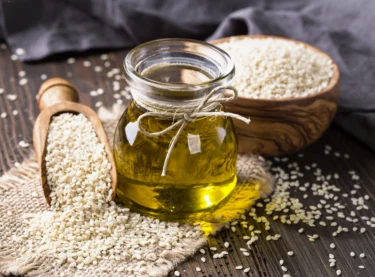
Sesame oil may be used for immediate relief in case of sensitive teeth. Oil pulling therapy is an alternative medical procedure as a traditional Indian folk remedy for strengthening gums and teeth. It involves swishing (moving around) edible oil in the mouth to maintain oral hygiene. Sesame oil may be used in oil-pulling therapy4.
You can take a tablespoon of sesame oil, sip it, and suck it between the teeth for a few mins. The oil will look milky white and quite thin. Don’t swallow the oil because it contains toxins and bacteria. This therapy should be done on an empty stomach in the morning and after that, brushing of teeth is essential to get rid of excess oil.
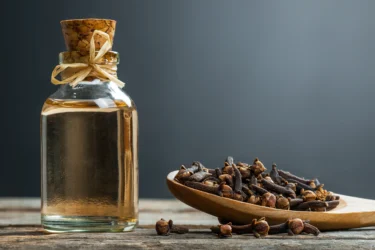
Clove contains bioactive components such as volatile oil and tannins. These bioactive chemicals may have beneficial properties like anti-inflammatory and antibacterial activities. The volatile oil present in cloves might be used as an analgesic (pain killer) for sensitive teeth (dentine)3.
You can use a whole clove. Place the clove directly onto the painful tooth. Then, by closing the mouth, crush it between upper and lower teeth. Alternatively, you may also make a paste of cloves by grinding some cloves together. Next, add a few drops of olive oil or water, stir it well and apply this paste to the sensitive tooth. It may provide some temporary relief for tooth sensitivity4.

Garlic may have antimicrobial activity. It may also show a bacteriostatic effect (stops the growth of bacteria) and act as a natural antibiotic. These beneficial properties of garlic may be contributed by the bioactive constituents such as flavonoids, alkaloids, saponins, steroids and lipids. Hence, garlic may be used for managing dental plaque3.
You can make a mixture of garlic by crushing it with a little bit of salt. Then, apply it to the affected tooth; it might help minimize the pain.
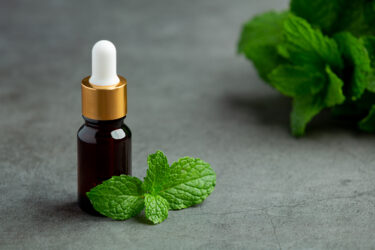
Peppermint contains a bioactive volatile oil called menthol. This essential oil may have antibacterial as well as an antifungal activity which might help limit the growth of bacteria forming in the dental plaque3.
You can make peppermint decoction (solution) using dried leaves of peppermint. Add them to a hot cup of water and allow them to steep for a few minutes. Let it cool and use it to swish (move) around in the mouth. Then spit it out and do this a couple of times to see the results. You can also use a slightly warmer peppermint tea bag. Hold it against the tooth for longer until the pain subsides.

Turmeric contains tarmins which might be responsible for antibacterial and antiseptic properties. In addition, it might be useful to manage dental plaque that causes sensitive teeth problems3.
You can easily make a turmeric paste by adding a teaspoon of turmeric powder into a small dish and enough water to make a thick paste. Then use this paste directly on the sensitive tooth; wait for a few mins and then rinse. Stick to this routine for a few days and see the results.

The neem tree contains a bioactive chemical, terpenoids. It may have anti-inflammatory and antipyretic (pain-relieving) effects. Hence, it might be beneficial for managing swollen gums and other problems resulting from gum disease3.
You can make neem powder by grinding dried neem leaves. Then, add one teaspoon of this mixture with baking soda into the water to make a paste. Use this paste as a toothpaste and brush your teeth with it. It may help relieve the pain.

Mustard tree is also called miswaak or toothbrush tree. It contains essential volatile oils, alkaloids, tannins, terpenoids and flavonoids. It may have antimicrobial properties and has been used as a traditional oral hygiene aid. It might help limit microbial growth, managing sensitive teeth problems3.
Miswaak is a chewing stick made from the roots and stems of a mustard tree. You may use miswaak as one of the home remedies for sensitive teeth.
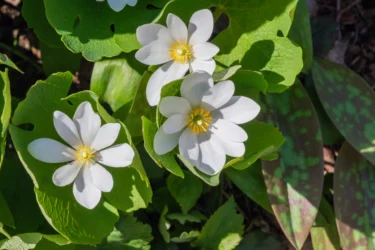
Bloodwort is also known as bloodroot. It may have antiplaque and antibacterial properties. The beneficial properties of bloodwort roots may be owing to its bioactive compound called sanguinarine alkaloid3. Hence, it might be useful for reducing dental plaque formation that causes sensitive teeth. Bloodwort tea may be used for sensitive teeth. Boil one teaspoon of roots in one cup of water and allow it to steep for a few minutes. Drink this tea three times a day. Bloodwort tea might be one of the useful sensitive teeth remedies.

A lifestyle change might be an often missed out natural remedy for managing sensitive teeth in the long run. It includes maintaining oral hygiene on a daily basis, following proper brushing and flossing techniques, gentle brushing action, using soft-bristled toothbrushes, desensitising toothpaste, avoiding acidic food and goind for regular dentist appointments1.
Though there are studies that show the benefits of these herbs and home remedies for the management of sensitive teeth, these are insufficient. Therefore, there is a need for human studies to establish the true extent of the benefits of these home remedies on our dental health. Thus, these should only be taken with caution and never as a substitute for medical treatment.
Also Read: Easy Home Remedies for Bleeding Gums
You need immediate medical attention if you see the following:
You must not rely on home remedies alone for the management of sensitive teeth and should consult a qualified doctor for any advice for sensitive teeth if the symptoms do not improve with home remedies.
Also Read: Home Remedies To Cure Bad Breath Naturally
Sensitive teeth is a painful sensation to live with, and can be extremely limiting. It does not occur in the normal healthy tooth. It is experienced as a sharp pain while brushing teeth and eating cold, hot or sweet food. Few remedies that you can try at your home to relieve the pain, such as using aloe vera, clove oil, sesame oil, garlic, turmeric, neem, peppermint, miswaak, etc. If the condition persists for longer, do not rely on home remedies; instead, contact a doctor and get proper treatment for your sensitive teeth.
Also Read: Simple Home Remedies For Swollen Gums
Tooth sensitivity occurs when your dentine (layer under tooth enamel) gets exposed due to receding gums. Hence, your dentine experiences a sharp pain that causes sensitive teeth whenever you eat or drink something2.
People should follow certain precautions such as maintaining oral hygiene, using a soft-bristled toothbrush, desensitising toothpaste and avoiding excess acidic food. Regular checkups with your doctor will help you manage your sensitive teeth condition2.
If the condition worsens, contact your concerned dentist and ask for treatment that may help reduce sensitivity. They include fluoride varnishes, which may be applied to the exposed root, dentine sealers and white fillings for covering exposed root surfaces2.
Bloodwort or bloodroot is a flowering plant and primarily contains an alkaloid called sanguinarine. It is an FDA-approved antibacterial and antiplaque agent3. It might be useful for managing dental plaque causing sensitive teeth. However, people should consult a doctor before using it as a home remedy for sensitive teeth and not use it to self-medicate themselves.
1. Tonguc O, Ozat Y, Sert T, Sonmez Y, Yesim Kirzioglu. Tooth Sensitivity in Fluorotic Teeth. Europ J of Denti. 2011;5:273–80. Available from: https://www.ncbi.nlm.nih.gov/pmc/articles/PMC3137440/pdf/dent05_p0273.pdf
2. Cleveland Clinic. [Internet]. Teeth Sensitivity. 2022 Jan 25 [cited 2022 Jul 9]. Available from: https://my.clevelandclinic.org/health/symptoms/10954-teeth-sensitivity
3. Hotwani K, Baliga S, Sharma K. Phytodentistry: use of medicinal plants. J of Comple & Integra Med. 2014;11(4):233–51. Available from: https://pubmed.ncbi.nlm.nih.gov/25153610/
4. Asokan S, Emmadi P, Chamundeswari R. Effect of oil pulling on plaque induced gingivitis: A randomised, controlled, triple-blind study. Indian J Dent Res. 2009;20(1):51. Available from: https://www.ijdr.in/temp/IndianJDentRes20147-5712839_155208.pdf
Disclaimer: The information provided here is for educational/awareness purposes only and is not intended to be a substitute for medical treatment by a healthcare professional and should not be relied upon to diagnose or treat any medical condition. The reader should consult a registered medical practitioner to determine the appropriateness of the information and before consuming any medication. PharmEasy does not provide any guarantee or warranty (express or implied) regarding the accuracy, adequacy, completeness, legality, reliability or usefulness of the information; and disclaims any liability arising thereof.
Links and product recommendations in the information provided here are advertisements of third-party products available on the website. PharmEasy does not make any representation on the accuracy or suitability of such products/services. Advertisements do not influence the editorial decisions or content. The information in this blog is subject to change without notice. The authors and administrators reserve the right to modify, add, or remove content without notification. It is your responsibility to review this disclaimer regularly for any changes.
Do you ever feel sick to your stomach, as if you are about to throw up? If yes, you might have been feeling nauseated.
Nausea is the discomforting sensation with an inclination to vomit. Everyone experiences nausea from time to time because of multiple reasons. Nausea is not a disease but rather a symptom. It can be a symptom of many health problems and is usually not serious. You can take simple measures to get relief from nausea. You can use certain herbs and remedies to take care of nausea1,2.
However, if the condition does not improve using home remedies, reach out to your healthcare provider. It is important to find out the underlying cause of your symptoms before managing them properly.
Nausea is a symptom which can be caused due to
Also, if you feel nauseated after eating something, it could be due to gastritis (stomach inflammation). If you feel nauseous one to eight hours after eating, it could be due to food poisoning1. Pregnant women often feel nauseated in the first trimester of the pregnancy, which may continue for some time.
Nausea may be accompanied with or without vomiting. The symptoms of nausea include
Important thing about nausea is if you are vomiting without nausea, consult a neurologist as it might be a sign of brain problems
Dr. M.G. Kartheeka, MBBS, MD(Pediatrics)
Here are some herbal remedies that can use to relieve nausea.
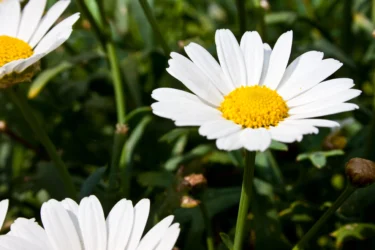
Chamomile is a prominent medicinal herb mentioned in traditional texts. Chamomile shows a positive effect on the stomach. As per research4, chamomile could reduce nausea and vomiting in pregnant women. To make chamomile tea, boil some chamomile tea leaves in water. Strain the tea in a cup when brewed for some time. You can also add some honey for taste. Sipping on this tea may help relieve nausea.
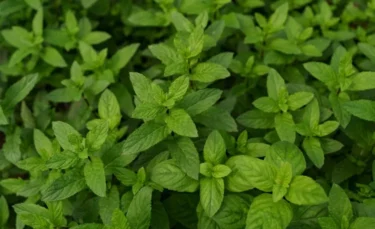
Mint or peppermint is a herb often used to flavour foods and other products. Mint has gastric relaxant properties. Mint helps relax the stomach muscles, thereby relieving nausea and vomiting. Mint also helps calm the mind. Aromatherapy with mint may also help with nausea by exerting positive psychological effects. In a study4 conducted by Haddadi et al., mint leaves extract could reduce nausea in breast cancer patients. Similar activity was observed in pregnant women as well as in a separate study conducted by Abdolhosseini et al. You can use fresh mint leaves to brew peppermint tea. Boil some fresh mint leaves in water. Turn off the heat, and let it steep before straining the tea into a cup. Sipping on this warm peppermint tea may help relieve nausea symptoms.
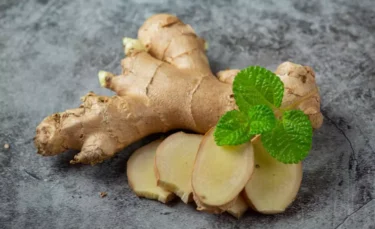
Ginger is a popular herbal remedy used for various conditions because of its minimal side effects. Ginger contains phytochemicals that may show anti-vomiting effects by relaxing stomach contractions. Trials showed ginger could reduce the incidence of nausea and vomiting in pregnant women4. You can add ginger to your food or take ginger lemon tea to relieve nausea. To make ginger lemon tea, you need to boil fresh ginger in water for some time. Turn off the heat and let it stay for a while. Squeeze in some lemon juice and your ginger lemon tea is ready to drink. You can also add some honey for taste.
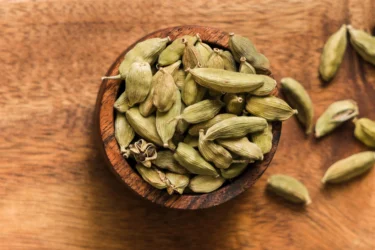
Cardamom, scientifically known as Elletaria cardamomum, is known as the spice queen. Cardamom is used as an effective remedy for a range of stomach conditions. Cardamom helps relieve nausea by relaxing the stomach walls. Cardamom aromatherapy may be used to relieve pregnancy-related nausea and vomiting4. There are several ways to use cardamom for nausea;
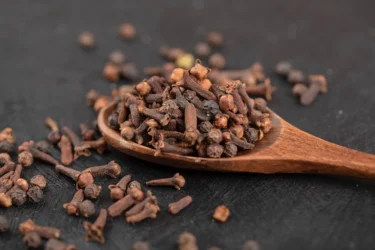
Clove is a commonly used aromatic herb found in every Indian kitchen. Also known as Lavanaga or Laung in Hindi, Clove may be an effective remedy for nausea. To use clove for nausea, you can take some clove powder and mix it with some honey to make a paste. You can lick this paste to relieve nausea. You can also chew on some cloves to get the benefits5. You can add clove to your herbal teas to alleviate nausea.
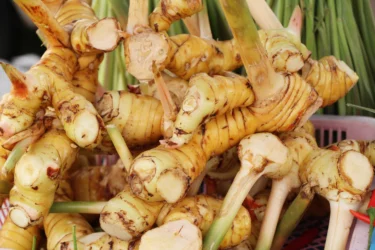
Greater galanjan, known as kulanjana in Hindi, may be a herbal remedy for digestive issues and nausea. Ayurveda offers greater galanjan as a remedy for all digestive disorders causing nausea. You can keep a small piece of greater galanjan in your mouth and chew it to relieve nausea5.
Here are some lifestyle changes to help relieve nausea.

Taking small sips of water when you feel nauseous is an effective way to get rid of it. You can also try cold or frozen drinks to help you feel better. Drinking plenty of water may help you prevent dehydration caused by vomiting1,2.
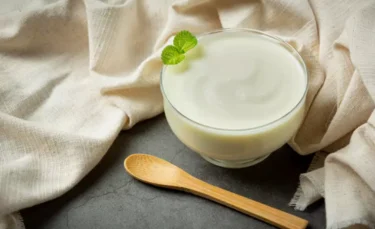
You should eat bland foods and dishes to relieve nausea. Try to stay away from spicy, fatty or salty food. You can nibble on some crackers to help you feel better. Other bland foods include curd, muffins, toast, potatoes and rice1,2,6.

Incorporating six to eight small meals throughout the day instead of eating three large meals will help cope with nausea. Apart from this, avoid skipping meals as an empty stomach may worsen your nausea. Try including bland snacks, such as biscuits, sandwiches and clear soups1,6.
Though some studies show the benefits of these herbs and home remedies for nausea, these are insufficient. Therefore, there is a need for large-scale human studies to establish the true extent of the benefits of these home remedies on human health. Thus, these should only be taken cautiously and never as a substitute for medical treatment.
Drinking lots of clear fluids and eating small healthy meals can help control nausea especially if it is associated with repeated episodes of vomiting.
Dr. Ashish Bajaj, M.B.B.S., M.D. in Clinical Pharmacology and Toxicology
In most cases, nausea does not lead to anything serious. However, you should reach out to your healthcare provider if you experience nausea for more than 2 days or if you experience the following signs1.
Nausea can also be a symptom of some heart problems; if you experience the symptoms mentioned below, you should seek immediate medical help.
For children, you should reach out to your provider immediately
If you face difficulty managing your morning sickness, consult with your doctor immediately1.
You must not rely on home remedies alone to treat nausea. Instead, you should consult a qualified doctor for advice on the condition if the symptoms do not improve with home remedies.
Also Read: Doctor-Approved Home Remedies For Vertigo
Nausea is a common symptom that many people experience at some point in their lives. In most cases, nausea does not lead to anything serious but can be highly discomforting. It is important to know the underlying cause of nausea as it can occur for many reasons. There are many herbs you can use to relieve nausea symptoms. Herbs like cardamom, clove, mint, ginger, and chamomile are some natural ways to get rid of nausea. However, if your condition fails to improve after using home remedies and nausea persists for more than a day, you need to reach out to your healthcare provider.
Also Read: Natural Home Remedies for Food Poisoning
Yes, you can try drinking small sips of water to relieve nausea. You can also try cold or frozen water to make you feel better. Drinking plenty of water can help you prevent dehydration due to vomiting.
You should involve bland foods in your diet to relieve nausea. Try to avoid spicy, fatty or salty foods. Some examples of bland foods include toasts, muffins, potatoes, and rice. Consult with your healthcare provider or doctor if your symptoms don’t improve with these steps.
You need to avoid some particular types of foods if you are feeling nauseous.
Avoid foods with strong smells
Avoid carbonated drinks, caffeine, and alcohol
Avoid spicy and fried foods
Avoid processed foods such as pastries, doughnuts, white bread, burgers, sausages, chips, and canned food items.
1. Healthdirect. Nausea [Internet]. [cited 2022 Jul 7]. Available from: https://www.healthdirect.gov.au/nausea
2. MedlinePlus. Nausea. Vomiting [Internet]. [cited 2022 Jul 7]. Available from: https://medlineplus.gov/nauseaandvomiting.html
3. Johns Hopkins Medicine. Nausea [Internet]. [cited 2022 Jul 7]. Available from: https://www.hopkinsmedicine.org/health/conditions-and-diseases/nausea
4. Ahmadi F, Yazdandoust Y. Use of medicinal herbs in the treatment of nausea and vomiting in pregnancy: A systematic review. Journal of Advanced Pharmacy Education & Research [Internet]. 2020;10(S1):102–5. Available from: https://japer.in/storage/models/article/use-of-medicinal-herbs-in-the-treatment-of-nausea-and-vomiting-in-pregnancy-a-systematic-review.pdf
5. Ayush Division. Ayurveda offering Herbal healing. Available from: https://esic.gov.in/attachments/publicationfile/7d11b02e5abb4717d53b4ce05efabd21.pdf
6. When you have nausea and vomiting: MedlinePlus Medical Encyclopedia [Internet]. [cited 2022 Jul 7]. Available from: https://medlineplus.gov/ency/patientinstructions/000122.htm
Disclaimer: The information provided here is for educational/awareness purposes only and is not intended to be a substitute for medical treatment by a healthcare professional and should not be relied upon to diagnose or treat any medical condition. The reader should consult a registered medical practitioner to determine the appropriateness of the information and before consuming any medication. PharmEasy does not provide any guarantee or warranty (express or implied) regarding the accuracy, adequacy, completeness, legality, reliability or usefulness of the information; and disclaims any liability arising thereof.
Links and product recommendations in the information provided here are advertisements of third-party products available on the website. PharmEasy does not make any representation on the accuracy or suitability of such products/services. Advertisements do not influence the editorial decisions or content. The information in this blog is subject to change without notice. The authors and administrators reserve the right to modify, add, or remove content without notification. It is your responsibility to review this disclaimer regularly for any changes.
Hypertension or high blood pressure in so common that today nearly every family has an adult with the condition. It might be dangerous if left unchecked. Hypertension is a chronic medical condition in which the blood pressure in the arteries is elevated. It makes the heart work harder to pump out the blood against this higher pressure, affecting the arteries (blood vessels) in the long run. Normal blood pressure is a force when a heart pumps blood against the artery walls. In adults, normal blood pressure measurement is 120/80 mmHg. The blood pressure during hypertension is 130/80 mmHg or higher. The higher the pressure, the greater the risk of complications1,2.
Hypertension increases the risk of heart diseases and stroke. Other conditions such as kidney diseases, congestive heart failure and blindness may also occur in case of very high blood pressure for too long.
It is estimated that twenty-nine per cent of adults in the US are affected by hypertension. The occurrence of this condition increases along with age and approximately 63 per cent of people over the 60s are more affected. Hypertension is more common in African Americans. It might start at a younger age and is more severe than in other populations1,2.
About 75-80 per cent of the world population, especially in developing countries, has started using herbal medications to manage hypertension. Herbal medicines have greater acceptability with the human body and have fewer side effects1.
So readers, presented below are a few home remedies for hypertension that you can try for managing hypertension in the comfort of your home, after a quick check with your doctor. Do not try to replace your current medicines with these herbal remedies.
The underlying cause of hypertension is unknown in ninety-five per cent of the cases. It might be related to both genetic as well as environmental factors1,2.
The following factors might increase the risk of developing hypertension.
These days incidence of hypertension in the young population has increased significantly. In many cases, patients are unaware that they are having high blood pressure(because there are no symptoms). After the age of 30, one should get their blood pressure checked periodically so that their hypertension is diagnosed at the earliest, which will help them to prevent any further complications.
Dr. Nikhil Yadav, MBBS MD, CCEBDM
One of the significant concerns about hypertension is that you may not even know that you have it. This can be because there is no direct cause identified yet. The following signs and symptoms must be noted in cases of extremely high blood pressure and may be completely missing in people with high blood pressure1,2.
Some home remedies for managing hypertension that you can try along with your prescribed medicines are:

In hypertension, changing or altering your regular lifestyle can go a really long way in managing the increased blood pressure. Regular exercise might increase heart performance. A proper diet regime containing more fruits and vegetables is a good choice. Avoiding having foods that are high in cholesterol, salts and fats can help maintain your blood pressure within healthier range and reduce the need for medicines3.

Celery is a medicinal herb that is used as a food and traditional medicine. Celery contains essential oils and flavonoids. It is rich in potassium, dietary fibre, vitamin K, folate, manganese, etc. Potassium is necessary for the heart and might help manage high blood pressure4.
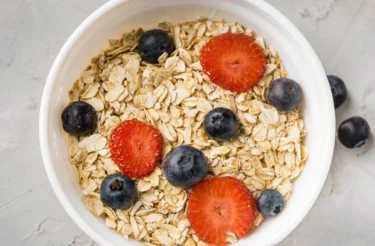
Oatmeal is a rich source of dietary fibre, and one of the many possibly beneficial home remedies to lower blood pressure. A diet containing soluble whole oats might significantly lower hypertension. A scientific study11 (Keenan et al. 2002) found that adding oats cereal to a patient’s regular hypertension diet substantially reduces systolic and diastolic blood pressure. Whole oats may be an effective dietary therapy in the treatment of hypertension1.
Oatmeal porridge may be one of the beneficial natural remedies for high blood pressure. To make oatmeal porridge, add some hot water and sugar to the oats cereal mixture. You can adjust the porridge consistency as you want by stirring the mixture. Oatmeal porridge is instant food and yet, it is so healthy that it may be used for managing hypertension.
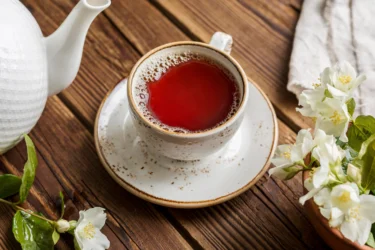
Several health benefits associated with tea might potentially be useful for managing hypertension. Research10 by Yang et al. 2004 suggests that drinking green tea (unfermented) and oolong tea (partially fermented) might decrease the risk of developing hypertension1.
Oolong tea is partially fermented and sits between black and green tea. It is a more caffeinated-type tea.
Drinking green tea may provide instant relief from high bp. To make green tea, add some green tea leaves or a green tea bag in hot water. Let it simmer for a few minutes. Then, remove the leaves and use the brew to sip on. You can also add honey or some lemon juice to it if you don’t like the taste of green tea. Nothing beats this home remedy if you stay in a cold region.
It is a very common observation that a person might be taking medicines to control hypertension which are not effective or the patient has stopped taking medicines for hypertension which leads to uncontrolled hypertension, which might lead to a life-threatening situation. These should be attended by a physician on an urgent basis.
Dr Ashish Bajaj, M.B.B.S, M.D. in Clinical Pharmacology and Toxicology
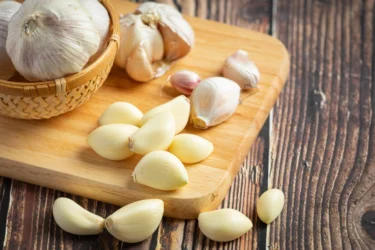
Garlic might be considered one of the best home remedies for hypertension given how widely it is available in nearly every household in abundance! Studies have reported that it may have hypotensive action (blood pressure-lowering effect). Garlic is thought to increase nitric oxide production, which might result in smooth muscle relaxation and dilation of vessels. The active compound that gives garlic its unique odour and healing benefits is known as allicin1.
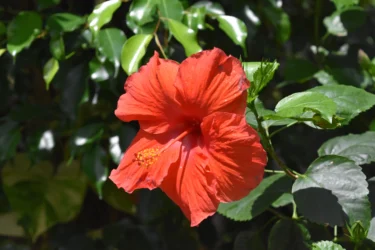
One study8 (Mojiminiyi et al. 2007) reported the calyx of hibiscus has a blood pressure-lowering effect. An animal study9 (Adegunloye et al. 1996) also suggested that an intravenous administration of the water extract of dry hibiscus calyx produced a drop in the blood pressure in animal studies. A human clinical trial of the plant extract has shown similar evidence1.
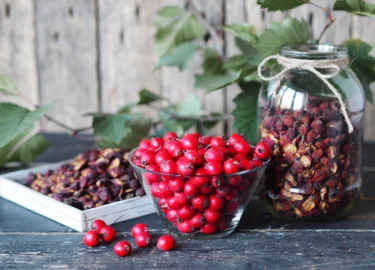
Hawthorn or hawberry has been used in China for thousands of years. It maybe used as a decoction for managing hypertension. Various studies, including clinical trials and pharmacological studies, have shown that it has the ability to lower blood pressure. Hawthorn contains two main substances – procyanidins and flavonoids that might contribute to its beneficial effects on the heart. These essential components have potent antioxidant activity1.
Also Read: Home Remedies For Headache By Dr. Siddharth Gupta
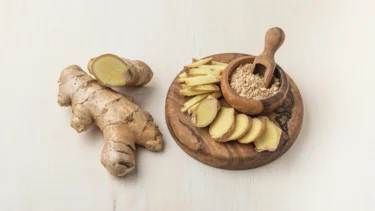
Ginger roots are commonly used in Asian cooking. They might help to enhance blood circulation and relaxe the muscles surrounding blood vessels. There are various formulations used in animal studies, such as ginger rhizome and Korean ginseng extract. A report7 by (Nicoll et al. 2009) suggested that the human trials for the hypotensive (low blood pressure) effect of ginger have been few and generally resulted in inconclusive results1.
Though there are studies that show the benefits of the given herb and home remedies in the condition, these are insufficient. Therefore, there is a need for large-scale human studies to establish the true extent of the benefits of these home remedies on human health. Thus, these should only be taken with caution and never as a substitute for medical treatment.
Celery contains high levels of 3-N-butylphthalide, a kind of photochemical that may help in controlling high blood pressure. You can eat a few stalks of celery as a simple snack daily.
Dr. M.G. Kartheeka, MBBS, MD(Pediatrics)
Hypertension is often asymptomatic. However, you must take immediate medical attention if you see the following danger signs-
You must not rely on home remedies alone for the treatment of hypertension or high blood pressure. You should consult a qualified doctor for any advice for hypertension. Hypertension is a severe health condition and needs diagnosis and treatment appropriately.
Also Read: Natural Home Remedies For Diabetes By Dr. Rajeev Singh
Over the past 50 years, the definition of hypertension has continuously evolved. Hypertension or high blood pressure likely develops with advancing age. It is a complex disease and is influenced by genetic as well as environmental factors3.
Though there are no symptoms of hypertension and some people don’t even know that they have it, a regular checkup and doctor’s consultation will help you establish it and treat it in time.
A lifestyle and dietary changes along with proper medications might help you lower the risk of associated health complications1. You can follow simple home remedies that may be helpful in managing hypertension. But ultimately, the doctor’s advice is essential.
Also Read: Natural Home Remedies To Reduce Belly Fat
Hypertension is classified as primary (essential) or secondary hypertension. About 90 to 95% of cases are called primary hypertension. It refers to high blood pressure for which no medical cause has been identified. The remaining 5 to 10% of cases are termed secondary hypertension and are caused by some underlying medical condition and can often be corrected1.
Hypertension is estimated to affect about 63 per cent of adults above the age of sixty. Other than this, there is a possibility that it might start in the younger generation in case of African Americans2.
Herbal medicines are used in most developing countries due to their better tolerability and fewer side effects. Other herbs such as flaxseeds, basil, soybeans, tomato, sesame, cocoa bean, cocoa butter, carrot, radish, black plum, pomegranate, murungai, etc. may be used as potential home remedies for managing hypertension1. However, people should not use these herbs to self-medicate themselves on their own before consulting with an Ayurvedic physician.
Other than herbal medicines, conventional medicines such as beta-blockers, diuretics, calcium channel blockers, and angiotensin-converting enzyme (ACE) inhibitors have been used. They all have been shown to reduce the occurrence of stroke in patients with hypertension3. However, people must consult their doctor before using any medicines to manage hypertension.
1. Tabassum N, Ahmad F. Role of natural herbs in the treatment of hypertension. Pharmaco Rev. 2011;5(9):30-40. Available from: https://www.ncbi.nlm.nih.gov/pmc/articles/PMC3210006/pdf/PRev-5-30.pdf
2. Hypertension: MedlinePlus Genetics [Internet]. [cited 2022 Jul 7]. Available from: https://medlineplus.gov/genetics/condition/hypertension/#references
3. Price R, Kasner S. Hypertension and hypertensive encephalopathy. Handb Clin Neurol. 2014;119:161–167. Available from: https://pubmed.ncbi.nlm.nih.gov/24365295/
4. Illes J. Blood Pressure Change After Celery Juice Ingestion in a Hypertensive Elderly Male. Journal of Chiropractic Medicine. 2021;20(2):90–94. Available from: https://www.ncbi.nlm.nih.gov/pmc/articles/PMC8703128/pdf/main.pdf
5. Ried K. Garlic lowers blood pressure in hypertensive subjects, improves arterial stiffness and gut microbiota: A review and meta-analysis. Experime and Therape Med. 2020;19(2):1472-1478. Available from: https://www.ncbi.nlm.nih.gov/pmc/articles/PMC6966103/pdf/etm-19-02-1472.pdf
6. Singh P, Khan M, Hailemariam H. Nutritional and health importance of Hibiscus sabdariffa: a review and indication for research needs. J of Nutri Health & Food Engin. 2017;6(5):125–128. Available from: http://medcraveonline.com/JNHFE/JNHFE-06-00212.pdf
7. Nicoll R, Henein MY. Ginger (Zingiber officinale Roscoe): a hot remedy for cardiovascular disease? Int J Cardiol. 2009 Jan;131(3):408-9. doi:10.1016/j.ijcard.2007.07.107. PMID: 18037515. Available from: https://pubmed.ncbi.nlm.nih.gov/18037515/
8. Mojiminiyi FB, Onifade AA, Adeyemi OO. Antihypertensive effect of an aqueous extract of the calyx of Hibiscus sabdariffa in experimental hypertension. J Ethnopharmacol. 2007;113(1):47–52. doi:10.1016/j.jep.2007.06.009. Available from: https://www.sciencedirect.com/science/article/abs/pii/S0367326X0700072X
9. Adegunloye BJ, Omoniyi JO, Owolabi OA, Ajagbonna OP, Sofola OA, Coker HA. Mechanisms of the blood pressure lowering effect of the calyx extract of Hibiscus sabdariffa in rats. Afr J Med Med Sci. 1996 Sep;25(3):235-238. PMID: 10457797. Available from: https://pubmed.ncbi.nlm.nih.gov/10457797/
10. Yang YC, Lu FH, Wu JS, Wu CH, Chang CJ. The protective effect of habitual tea consumption on hypertension. Arch Intern Med. 2004 Jul 26;164(14):1534–40. doi:10.1001/archinte.164.14.1534. PMID: 15277285. Available from: https://pubmed.ncbi.nlm.nih.gov/15277285/
11. Keenan JM, Whelton SP, Whelton PK. Oat ingestion reduces systolic and diastolic blood pressure in patients with mild or borderline hypertension: a pilot trial. J Fam Pract. 2002;51(5):451–456. PMID: 11978262. Available from: https://pubmed.ncbi.nlm.nih.gov/11978262/
Disclaimer: The information provided here is for educational/awareness purposes only and is not intended to be a substitute for medical treatment by a healthcare professional and should not be relied upon to diagnose or treat any medical condition. The reader should consult a registered medical practitioner to determine the appropriateness of the information and before consuming any medication. PharmEasy does not provide any guarantee or warranty (express or implied) regarding the accuracy, adequacy, completeness, legality, reliability or usefulness of the information; and disclaims any liability arising thereof.
Links and product recommendations in the information provided here are advertisements of third-party products available on the website. PharmEasy does not make any representation on the accuracy or suitability of such products/services. Advertisements do not influence the editorial decisions or content. The information in this blog is subject to change without notice. The authors and administrators reserve the right to modify, add, or remove content without notification. It is your responsibility to review this disclaimer regularly for any changes.
Do you have trouble breathing and feel a tightness in the chest? Do you hear a musical sound while breathing? Doctors call this wheezing, and it is a common sign while diagnosing any respiratory disorder. One such respiratory disorder may be asthma which can affect anyone, especially children. It is of different types depending on the cause, etc. Asthma is a simplified term for bronchial asthma, a long standing and life-threatening condition affecting the lungs. It mainly occurs when the airway gets blocked due to narrowing or excess mucous. Your doctor might prescribe you medications which might be effective in helping with the symptoms of asthma. Let’s find out more about this disease1.
There is no clear explanation why some people have asthma and others don’t, but there is ongoing research on this subject. Factors that might put certain people at a higher risk for asthma are1:
Asthma can delay physical development in children and may be a common cause of repeated respiratory infection, it should not be left untreated, especially in children.
Dr. Ashish Bajaj, M.B.B.S., M.D. in Clinical Pharmacology and Toxicology
Generally, the asthma symptoms are very obvious and resemble the signs and symptoms of other respiratory diseases1. Some of the common symptoms are as follows:
Knowing the warning signs and the triggers of an asthma attack can help you avoid or control your asthma. When you follow your doctor’s advice and take medicines exactly as they tell you to, you might be able to have control over your asthma; you can then notice:
Pulmonologist or pediatrician opinion and Metered dose inhalers form the basis of treatment of asthma. Home remedies help in control of asthma.
Dr. M.G. Kartheeka, MBBS, MD(Pediatrics)
The home remedies for asthma mentioned below need more research to be incorporated in daily life. As asthma can be a life-threatening disease, it is a serious condition and must be diagnosed and treated by a doctor1. According to the currently available data, the following might be helpful for asthma.
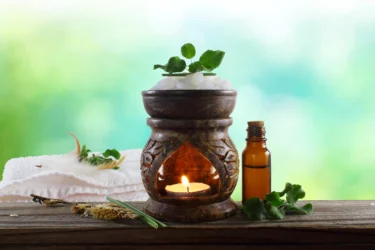
Karpoorathy oil might help with asthma. It might help to relieve the phlegm that gets accumulated in the chest and might help in breathing freely. An ayurvedic physician might suggest the application of the oil to your back and chest. However, more research is required to state the potential effects of karpoorathy oil on asthma. Kindly consult a doctor before using it. Please do not self-medicate3.

Kayakarpam (a division of Siddha medicine) mentions breathing exercises for people with asthma. These breathing exercises are known as pranayama. These exercises might help strengthen the respiratory system, which might help with asthma. They might also help in lowering stress. Please ensure that you consult with an expert in Siddha to guide you through the pranayama exercises3.
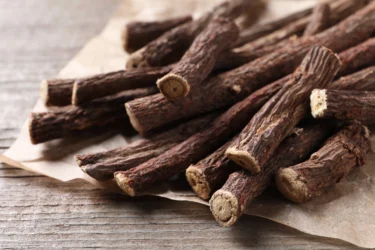
Mulethi is also known as yashtimadhu or liquorice root. It is scientifically known as Glycyrrhiza galbra and belongs to the family Fabaceae. It might have the potential to help with asthma. A tea made from the root of liquorice might be recommended by your Ayurvedic physician. To make the tea, you should take the root and boil it in water. Drinking this tea might be helpful for asthma. However, more studies are required to prove the potential effects of mulethi on asthma. Please consult a doctor before using it. Do not self-medicate4.

Vasa is known as vasaka (English), arusa (Hindi), basanga (Oriya) and bhekar (Punjabi). It is known by many different names in regional languages across India. The scientific name is Adhatoda vasica and it belongs to the Acanthaceae family. A decoction made with vasa leaves along with dry ginger, long pepper and honey may be recommended by an Ayurvedic physician. This decoction might have the potential to help with cough associated with bronchial asthma. However, more research is required to ascertain these effects. Therefore, please consult a doctor before using it4.

It is also known as chakra phool, anasphal, takkolam and badian. It might have the potential to help with asthma. Along with honey, it might help with bronchial cough associated with asthma. Therefore, it might be a herb used by Ayurvedic physicians. However, more research is required to prove its effect on asthma. Kindly consult a doctor before using it and do not self-medicate4.
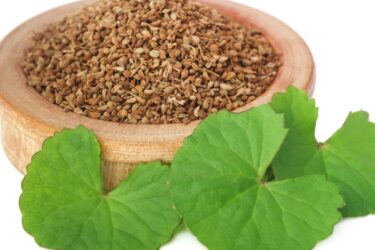
It is also known as Karpuravalli in Tamil, Pathurchur in Marathi and by various names such as Indian mint, Cuban oregano, Indian borage and Mexican mint in English. The leaves of this plant might help provide relief from the symptoms of asthma. Boiling a few leaves in water and inhaling the vapour might be helpful for asthma. It might also be helpful as a decoction with ginger, pepper and honey to relieve chest congestion. However, make sure to consult with a doctor before using it4.
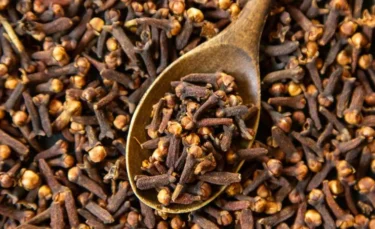
Clove is commonly used in Indian kitchens. It might help with asthma as well. It is used to make a decoction. To make the decoction, you should take the coarse powder of clove, a few tulsi (basil) leaves and black pepper and boil them in some water. Drinking this preparation might be recommended by your Ayurvedic physician. However, more research is required to back up such claims. Therefore, please consult a doctor before using it4.

It is referred to as Indian birthworth or serpent root. Its scientific name is Aristolochia indica and it belongs to the Aristolochiaceae family. It might help with bronchial asthma. The plant root powder with some honey may be recommended by your Ayurvedic doctor to help with your asthma. It might also help with cough, fever and toxicities. However, more research is required to prove the effects of isvari on asthma. Kindly consult a doctor4.
Though there are studies that show the benefits of the given herb and home remedies in the condition, these are insufficient. There is a need for large scale human studies to establish the true extent of the benefits of these home remedies on human health. Thus, these should only be taken with caution and never as a substitute for medical treatment.
Asthma is a serious condition and must be treated by a medical professional. Do not try to self-medicate. In case of a severe asthma attack, make sure to follow the following steps:
You should look out for the following signs and should seek immediate emergency medical care
You must not rely on home remedies alone for the treatment of condition and should consult a qualified doctor for any advice for condition if the symptoms do not improve with home remedies.
Asthma is a disease of the lung and you might notice coughing, wheezing, tightness of chest, etc. as symptoms. It can be a life endangering situation if not treated properly. The exact reason for the occurrence is not known but genetics, environment, allergies, etc. might play a role. There are a few home remedies for asthma like, clove, ajwain patta, pranayama, etc. which might help with asthma. However, more research is required to prove the possible positive effect that these herbs for asthma treatment might have. Moreover, asthma is a serious condition and must be diagnosed and treated by a doctor. Please do not use the above-mentioned herbs to self-medicate.
Clove, ajwain patta, star anise, mulethi, vasa, etc. might have a potential to help with asthma and might act as home remedies for asthma. However, more research is required to prove their potential use. Moreover, a doctor must be consulted before using these herbs for asthma3,4.
Clove or Lavanga might have a potential to help with asthma. Its use in the form of a decoction along with pepper and ginger might be recommended by your Ayurvedic physician. More research is required to prove such claims. Kindly consult a doctor before using it4.
Pranayama might be recommended by your Siddha medicine practitioner and might be helpful for asthma as it might help to strengthen the respiratory system3.
No. You should not use any herbs to self-medicate. You must not alter, replace or discontinue any ongoing medical treatment. Kindly follow your doctor’s advice as asthma can be a life-threatening situation and must be diagnosed and treated by a qualified doctor1.
The herbs that might have a potential to help with asthma are ajwain patta, star anise, clove, isvari, vasa etc. However, there is more research required to ascertain the potential use of these herbs for asthma. Therefore, you should consult a doctor before using them4.
Disclaimer: The information provided here is for educational/awareness purposes only and is not intended to be a substitute for medical treatment by a healthcare professional and should not be relied upon to diagnose or treat any medical condition. The reader should consult a registered medical practitioner to determine the appropriateness of the information and before consuming any medication. PharmEasy does not provide any guarantee or warranty (express or implied) regarding the accuracy, adequacy, completeness, legality, reliability or usefulness of the information; and disclaims any liability arising thereof.
Links and product recommendations in the information provided here are advertisements of third-party products available on the website. PharmEasy does not make any representation on the accuracy or suitability of such products/services. Advertisements do not influence the editorial decisions or content. The information in this blog is subject to change without notice. The authors and administrators reserve the right to modify, add, or remove content without notification. It is your responsibility to review this disclaimer regularly for any changes.
It might be a fun topic for stand-up comedians, but it is one of the most troublesome issues to solve for those facing this trouble. Constipation can be annoying and sometimes painful. In addition, it is often accompanied by gas and abdominal pain.
Constipation is a common condition affecting all age groups. Simple lifestyle modifications can help relieve the symptoms of constipation. Home remedies have been used for ages to relieve and manage constipation. However, in some cases, constipation can be a sign of a severe underlying condition. It is normal to feel embarrassed to talk about constipation. Therefore, you must go to see a doctor if your constipation is bad or the symptoms don’t improve1,2.
if you wish to know more about constipation symptoms, remedies and associated lifestyle changes, continue reading!
Did you know?
You feel constipated when your stool is hard, dry and difficult to pass. A few common causes of constipation are:
Other causes of constipation are
Toddlers can get constipated when they are starting with solid foods. Older children can become constipated when they hold in bowel movements2.
In my experience chronic constipation leads to painful defecation, which further leads to fear of passing stools which in turn becomes a vicious cycle especially in children. So pain control is very important in children. Contact your doctor for the same.
Dr. M.G. Kartheeka, MBBS, MD(Pediatrics)
If you experience the following signs, you may be suffering from constipation.
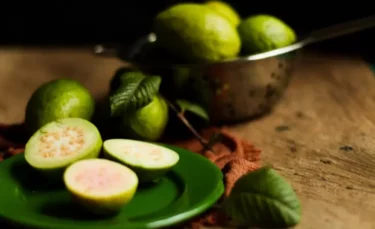
Guava fruit, also known as Amrood in Hindi, is commonly used in many Indian households. Guava fruit is effective in many health conditions. It may be used as a good source of many nutrients. It may act as a laxative (help facilitate bowel movement). You can consume fresh guava to ease constipation4.
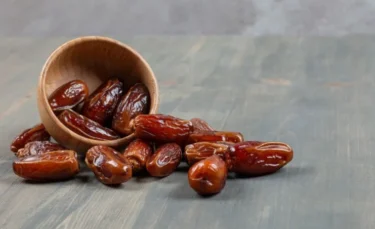
Consuming dates might help you strengthen the digestive system and relieve constipation. In the morning, you can take five to six fresh dates with ghee and black pepper powder. It should be followed by a glass of lukewarm water. This practice may help you relieve constipation4.
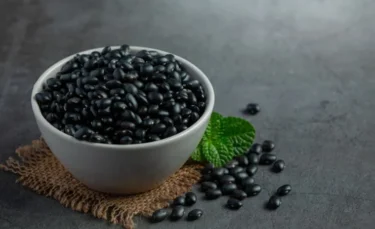
Consuming black grams may help people with irregular bowel habits, facilitate bowel movements and help irregular bowel movements. Fry some black gram seeds and grind them into a fine powder. You can take this powder with buttermilk to relieve constipation4.

Betel leaves may help aid digestion, and facilitate the secretion of digestive juices, bloating and gas. Betel leaf may also help relieve constipation. Chewing on some fresh betel leaves after every meal may help in digestion and relieve constipation4.

Indian cinnamon or tej patra is a common kitchen herb used in Indian households. Adding tej patra to your foods and dishes may help relieve indigestion and constipation. You can take tej patra in the form of tea. To make tej patra tea, you can boil some leaves in water for a few minutes4. Strain the mixture in a cup, and your tea is ready to drink.
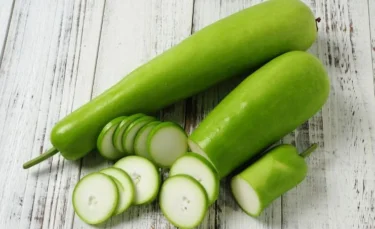
The leaves of bottle gourd or dudhi might show laxative properties. You can use fresh leaves of a bottle gourd to help relieve constipation. Prepare chutney using the fresh leaves. This chutney can be taken along with food4.
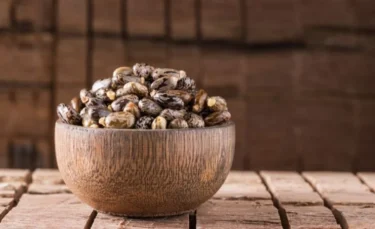
Castor is a common medicinal plant used for a variety of conditions. It might help relieve constipation. The roots of castor can be used along with milk. Take some dried castor root and grind it into a fine powder. Mix this powder with a glass of milk. Boil this mixture and reduce it to half of its initial volume. Drink this mixture to relieve constipation4.
You can make these lifestyle changes to relieve constipation.
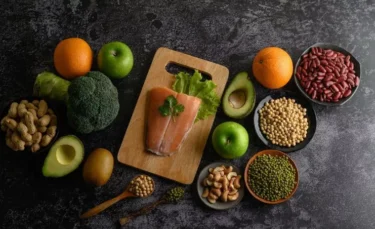
Following a diet rich in fibre may help relieve and prevent constipation. You can talk to your dietician or healthcare provider and plan a diet including a variety of fibre-rich meals. Also, you need to gradually add a little fibre to your diet to ensure your body gets used to digesting it. Some familiar sources of fibre include

You should drink more water to facilitate bowel movements and prevent dry stools. Apart from water, you can drink fruit and vegetable juices and clear soups. Drinking enough water and other beverages will help you avoid dehydration and relieve constipation4.

Regular exercise is good for bowel mobility. You need to exercise every 4day for at least 30 minutes. If you have irregular bowel mobility, you must be as active as possible without overdoing it. Exercising regularly may be an excellent way to manage your symptoms and also prevent constipation3.

Fibre intake is important to relieve constipation. If you wish to relieve or avoid constipation, you must avoid the foods which have low or zero fibre content4.
Though studies show the benefits of the given herbs and home remedies in constipation, these are insufficient. Therefore, there is a need for large-scale human studies to establish the true extent of the benefits of these home remedies on human health. Thus, these should only be taken cautiously and never as a substitute for medical treatment.
Also Read: Home Remedies For Nausea By Dr. Rajeev Singh
You must call your healthcare provider and seek medical help if you
You must not rely on home remedies alone for the treatment of constipation. You should consult a qualified doctor for any advice for the condition if the symptoms do not improve with home remedies.
Also Read: Natural Laxatives: Your Guide to Safe and Effective Remedies for Constipation
Constipation is a common but painful condition that may interfere with your daily activities. Home remedies and lifestyle changes can help manage and relieve your symptoms. Common kitchen ingredients like black gram, bay leaf, castor, guava and dates may be used as natural remedies for constipation. Increasing water and fibre intake in diet coupled with regular exercise are other effective ways to manage constipation. However, if your symptoms don’t improve and you are unable to pass a bowel movement for a continuous three days, reach out to your healthcare provider. Constipation can also signify severe underlying health issues requiring medical attention, which is why it is crucial to seek professional opinion instead of self-medicating and relying on home remedies.
Also Read: Best Home Remedies For Gout
There are many herbs and ingredients that may be used as a constipation cure at home. For example, you may use ingredients like betel leaves, bay leaves, dates, black grams and castor at home to relieve constipation and facilitate bowel movement4. These ingredients can be a part of your daily diet through foods and recipes. However, you must not rely only on home remedies to cure your symptoms. Make sure to consult a doctor if the symptoms don’t improve.
Constipation left untreated for an extended period might increase the risk of developing anal fissures (a tear in the anus that may cause pain and bleeding) and haemorrhoids (piles)2.
In most cases, constipation symptoms improve with home remedies and lifestyle changes. However, constipation could also be a sign of an underlying health condition. If you experience symptoms like nausea, vomiting, abdominal pain, gas, blood in stools, and lack of bowel movement for three days, you need to consult your healthcare provider and get treated1,2.
Drinking more water may help you facilitate bowel movements and make the stool easier to pass. This may help relieve constipation. Drinking water may be an effective way to manage your symptoms and avoid dehydration. However, if your symptoms do not improve and you experience constipation for three days straight, don’t hesitate to reach out to your healthcare provider.
1. MedlinePlus Medical Encyclopedia. Constipation – self-care [Internet]. [cited 2022 Jul 18]. Available from: https://medlineplus.gov/ency/patientinstructions/000120.htm
2. Better Health Channel. Constipation [Internet]. [cited 2022 Jul 18]. Available from: https://www.betterhealth.vic.gov.au/health/conditionsandtreatments/constipation
3. Ayush Division. Ayurveda offering Herbal healing. Available from: https://esic.gov.in/attachments/publicationfile/7d11b02e5abb4717d53b4ce05efabd21.pdf
4. Eating, Diet, & Nutrition for Constipation | NIDDK [Internet]. [cited 2022 Jul 19]. Available from: https://www.niddk.nih.gov/health-information/digestive-diseases/constipation/eating-diet-nutrition
Disclaimer: The information provided here is for educational/awareness purposes only and is not intended to be a substitute for medical treatment by a healthcare professional and should not be relied upon to diagnose or treat any medical condition. The reader should consult a registered medical practitioner to determine the appropriateness of the information and before consuming any medication. PharmEasy does not provide any guarantee or warranty (express or implied) regarding the accuracy, adequacy, completeness, legality, reliability or usefulness of the information; and disclaims any liability arising thereof.
Links and product recommendations in the information provided here are advertisements of third-party products available on the website. PharmEasy does not make any representation on the accuracy or suitability of such products/services. Advertisements do not influence the editorial decisions or content. The information in this blog is subject to change without notice. The authors and administrators reserve the right to modify, add, or remove content without notification. It is your responsibility to review this disclaimer regularly for any changes.
Candida is a type of fungus that commonly causes vaginal candidiasis, which is one of the most common types of vaginitis1. Infection of the vagina is very common, of which yeast infections such as vaginal candidiasis are the second most common2. Yeast is always present in our body but may cause an infection when it overgrows. Conditions that may cause the loss of chemical balance, like pregnancy, antibiotic medications, diabetes etc., may lead to the occurrence of a vaginal yeast infection.
This guide describes the causes, symptoms and a few possible home remedies for vaginal yeast infections. It is important to note that this condition requires medical intervention, therefore, do not self-diagnose or take medications without proper consultation3.
A fungus called Candida causes vaginal yeast infections. This type of yeast is normally found in small amounts in the body and helps to maintain the natural balance of the microbiome. However, when this balance is disrupted, Candida can multiply rapidly and result in an yeast infection known as vulvovaginal candidiasis or vaginal candidiasis. This condition is characterised by symptoms of swelling, pain, and vaginal discharge3.
Some of the factors which may lead to the risk of vaginal yeast infections are:1,3,5
Although Candidal vaginal infections are very common and may resolve easily with topical treatment, if left untreated, this infection may result in complications characterised by redness, swelling and sometimes cracks in the walls of the vagina, which may be severely painful.
Dr Ashish Bajaj, M.B.B.S M.D. in Clinical Pharmacology and Toxicology
A few typical signs that can be noticed in the vagina if you have a vaginal yeast infection. They are as follows: 3,6
Some home remedies or natural methods may be helpful for vaginal yeast infections. However, using the following remedies is highly subjective and requires further research. They should only be used under the guidance of a medical professional.

Doctors may suggest practices to help take care of the vulva, the outer part of female genitals which acts as the gate to the uterus and protects it as well as the vagina. The doctor may recommend tips such as not washing the vulva excessively and suggest not using certain irritants like perfumed soaps, vaginal sprays or powders and bubble baths4.
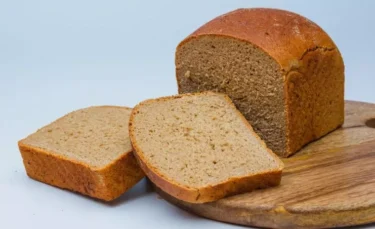
Research has shown that eating bread made with yeast may lead to repeated episodes of vaginal yeast infections. Another study showed that taking refined sugars may increase the risk of symptoms of vaginal yeast infections. Therefore, a diet low in yeast and refined sugars may help manage vaginal yeast infections. However, more research is needed to support these claims. Consult your doctor before making any changes to your diet3.

Garlic might have antifungal actions. Studies have shown that garlic might have the potential to help in vaginal yeast infections. The active compound in garlic, Allicin, might reduce fungal growth. Do not insert garlic directly into the vagina.
However, more studies on animals and humans is required to support its effectiveness. Garlic may also cause chemical burns or allergic reactions. Therefore, please consult a doctor before using this.6,7
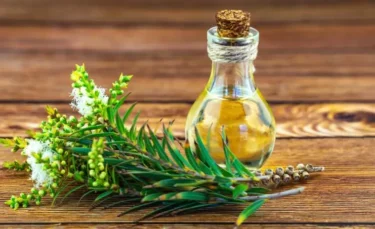
Several studies6 has found that tea tree oil may be beneficial as a herbal antifungal and antibacterial agent. Adding tea tree oil to the bath routine or using tea tree pessaries (a medicinal capsule inserted into the vagina) may be helpful. They products are also available as gels and creams. However, these products may cause severe irritation in some people so should only be used under medical supervision. In a study, it was hypothesised the effect of tea tree oil might depend on the acidic environment of the vagina. Therefore, the effects on the vagina might differ from one person to another.

Probiotics are known as good bacteria which may help in vaginal yeast infections. The recolonisation (refilling the lost bacteria) of bacteria, especially lactobacillus, may be helpful. Therefore, your doctor may recommend eating yoghurt, probiotic capsules, etc. and may also prescribe probiotic creams that have to be applied to the vagina6.

Creams with boric acid and other antifungal agents may be helpful against repeated vaginal yeast infections. Pessaries are certain medications that need to be inserted into the vagina. The pessaries have an antifungal agent that is enclosed in a gelatine capsule. When the gelatine capsule is placed in the vagina, it dissolves due to the body heat and the medicine is released. As the medicine is directly released into the vagina, it might act directly and help against the vaginal infection. It might be more effective than creams. Therefore, your doctor might suggest that you use them3,6.

Tight-fitting pants, pantyhose and synthetic underwear might lead to sweating. They are best avoided to prevent any fungal infections. It is better to use cotton clothing and underwear to relieve fungal infections. However, this does not have significant scientific evidence . Sun-drying or ironing freshly washed underwear may help sterilise it, reducing the risk of vaginal yeast infection1,3,4.
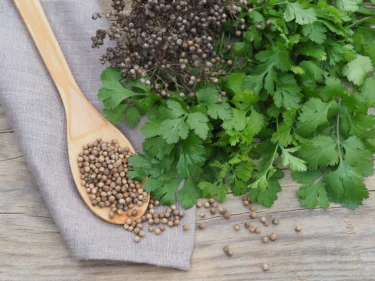
Research8 suggests that coriander seeds and leaves may be helpful against vaginal yeast infections. To use coriander seeds, you have to soak a few coriander seeds in water overnight. Straining the water and drinking it on an empty stomach may be beneficial. However, ensure that you consult a doctor before using this, to make sure it is appropriate for your situation.
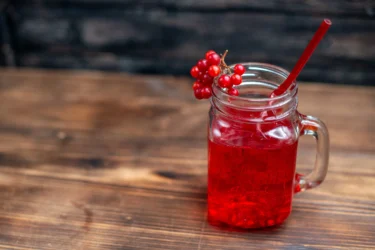
Drinking cranberry juice may also be helpful in vaginal yeast infection and drinking fresh cranberry juice without added sugars may be even better. However, more research is needed to support the benefits of cranberry juice in vaginal infections. A doctor’s guidance is advised to evaluate the best treatment for your condition9.
A few other home remedies for vaginal yeast infections are as follows:10
Ensure that you consult a doctor before using any home remedy.
Vaginal yeast infections are usually caused by a type of yeast called Candida albicans. It is normal for this yeast to live in the mucous membranes lining the genitals. Women should avoid using products that do more harm than good in excess, like vaginal douches or female intimate hygiene products. These products disturb the natural balance of germs and increases the risk of infections.
Dr. M.G. Kartheeka, MBBS, MD(Pediatrics)
There are insufficient studies that show the benefits of using herbal and home remedies which indicates a need for large-scale human studies to establish the true extent of the benefits of these home remedies on human health. Thus, home remedies should only be taken with caution and never as a substitute for medical treatment.
Also Read: Simple Home Remedies For Fungal Infections!
You should seek medical help from a doctor under the following circumstances:
If you are pregnant do not self-medicate for vaginal infections, immediately seek the guidance from a doctor .You must not rely on home remedies alone for the treatment of the condition and should consult a qualified doctor for any advice for condition if the symptoms do not improve with home remedies.
Also Read: What Is PCOD? Know It’s Symptoms, Causes & Treatment
Vaginal yeast infection is caused by a specific fungus or yeast called Candida. This yeast is normally present in the body but causes an infection when there is a disruption of the chemical balance in our body. As a result, you may experience redness and itching with white, thick, cottage-cheese consistency discharge from the vagina. It is advised to visit a doctor who can help guide you with the appropriate medicines and home remedies. Some tips that your doctor may suggest is to maintain good vulvar hygiene, wear breathable fabrics, and manage blood sugar levels to reduce the risk of recurrence. It is important to seek medical help to maintain overall reproductive health.
Also Read: Effective Home Remedies For Vaginal Dryness
Home remedies for vaginal yeast infections include probiotics, garlic, tea tree oil, cranberry juice, coriander seeds, lady’s finger etc. It is also observed that avoiding sugars and yeast-containing bread may be beneficial. However, more research is required to prove these effects in vaginal yeast infections. Consult a doctor before using any home remedy3.
You should consult a doctor if you have a white vaginal discharge as it can be due to many reasons. Do not rely on home remedies, instead consult a doctor at the earliest for early diagnosis and treatment.
Garlic has a bioactive compound (allicin), which may have beneficial antifungal and antibacterial properties to help in the management of yeast infections. It may also cause chemical burns and allergies. More research is needed to support its use, be cautious when using home remedies and ensure you consult a doctor before using them.
Tea tree oil may be beneficial in managing vaginal yeast infections. Your doctor might recommend adding it to baths or as pessaries. However, more research is needed to explore its potential side effects in humans. Always seek medical guidance before using this essential oil.
Apple cider vinegar may or may not be effective against yeast infections. More research is needed to support its effect against yeast infections. Therefore, always consult a doctor before using such home remedies.
Probiotics may help in vaginal yeast infection. However, more research is needed to support these claims and the use of probiotics as a remedy should be done only with the guidance of a doctor.
1.Jeanmonod R, Jeanmonod D, Chippa V. Vaginal Candidiasis (Vulvovaginal Candidiasis) [Internet]. National Library of Medicine. StatPearls Publishing; 2024 [cited 2025 Apr 17]. Available from: https://www.ncbi.nlm.nih.gov/books/NBK459317/
2. Madhavan P. Introduction Vulvovaginal candidiasis (VVC) is the second most common cause of vaginitis (inflammation of vaginal) after bacterial vaginosis and trichomoniasis.1 Approximately, 75% of women worldwide experience a single episode of VVC and 50% of them [Internet]. Academia.edu. 2020 [cited 2025 Apr 17]. Available from: https://www.academia.edu/80897958/Introduction_Vulvovaginal_candidiasis_VVC_is_the_second_most_common_cause_of_vaginitis_inflammation_of_vaginal_after_bacterial_vaginosis_and_trichomoniasis_1_Approximately_75_of_women_worldwide_experience_a_single_episode_of_VVC_and_50_of_them
3. World. Candidiasis (yeast infection) [Internet]. Who.int. World Health Organization: WHO; 2025 [cited 2025 Apr 17]. Available from: https://www.who.int/news-room/fact-sheets/detail/candidiasis-(yeast-infection)
4. Vaginal Candidiasis (Yeast Infection). Journal of Midwifery & Women’s Health [Internet]. 2021 Nov [cited 2025 Apr 17];66(6):825–6. Available from: https://onlinelibrary.wiley.com/doi/10.1111/jmwh.13326
5.Torondel B, Sinha S, Mohanty JR, Swain T, Sahoo P, Panda B, et al. Association between unhygienic menstrual management practices and prevalence of lower reproductive tract infections: a hospital-based cross-sectional study in Odisha, India. BMC Infectious Diseases [Internet]. 2018 Sep 21 [cited 2025 Apr 17];18(1). Available from: https://pmc.ncbi.nlm.nih.gov/articles/PMC6150969/
6. Satora M, Grunwald A, Zaremba B, Frankowska K, Żak K, Tarkowski R, et al. Treatment of Vulvovaginal Candidiasis—An Overview of Guidelines and the Latest Treatment Methods. Journal of Clinical Medicine [Internet]. 2023 Aug 18 [cited 2025 Apr 17];12(16):5376. Available from: https://www.ncbi.nlm.nih.gov/pmc/articles/PMC10455317/
7. Bekut M, Brkić S, Kladar N, Gavarić N, Božin B. Garlic clove applied as vaginal suppository – A case report. Complementary therapies in medicine [Internet]. 2018 Aug [cited 2025 Apr 17];39:97–100. Available from: https://pubmed.ncbi.nlm.nih.gov/30012400/
8. Freires I de A, Murata RM, Furletti VF, Sartoratto A, Alencar SM de, Figueira GM, et al. Coriandrum sativum L. (Coriander) Essential Oil: Antifungal Activity and Mode of Action on Candida spp., and Molecular Targets Affected in Human Whole-Genome Expression. Mylonakis E, editor. PLoS ONE [Internet]. 2014 Jun 5 [cited 2025 Apr 17];9(6):e99086. Available from: https://www.ncbi.nlm.nih.gov/pmc/articles/PMC4047076/
9. Rane HS, Bernardo SM, Howell AB, Lee SA. Cranberry-derived proanthocyanidins prevent formation of Candida albicans biofilms in artificial urine through biofilm- and adherence-specific mechanisms. Journal of Antimicrobial Chemotherapy [Internet]. 2013 Oct 10 [cited 2025 Apr 17];69(2):428–36. Available from: https://pmc.ncbi.nlm.nih.gov/articles/PMC3937597/Available from: https://pmc.ncbi.nlm.nih.gov/articles/PMC3937597/
10. The Inhibitor Activity Test of Green Okra Fruit Fraction (Abelmoschus Esculentus) Against Candida Albicans [Internet]. Iocspublisher.org. 2025 [cited 2025 Apr 17]. Available from: https://midwifery.iocspublisher.org/index.php/midwifery/article/view/617
Disclaimer: The information provided here is for educational/awareness purposes only and is not intended to be a substitute for medical treatment by a healthcare professional and should not be relied upon to diagnose or treat any medical condition. The reader should consult a registered medical practitioner to determine the appropriateness of the information and before consuming any medication. PharmEasy does not provide any guarantee or warranty (express or implied) regarding the accuracy, adequacy, completeness, legality, reliability or usefulness of the information; and disclaims any liability arising thereof.
What exactly does a high uric acid level mean, and should it be our concern? Uric acid is a waste product present in the blood. Uric acid is produced when compounds called purines are metabolized[1]. Under normal conditions, uric acid passes through the kidneys and urine. However, when we eat food high in purine content, uric acid levels increase in the body, leading to the formation of uric acid crystals. This deposition of uric acid crystals in the body is called gout. Let’s read about it in detail.
When we eat food with high purine content, there are chances of increased uric acid levels. Some of the foods that can lead to an increase in uric acid are:
The increase in uric acid does not present with specific symptoms unless it has progressed to the occurrence of diseases such as gout and uric acid nephrolithiasis (kidney stones). The symptoms of these diseases may manifest as the following:
The increased uric acid in the blood does not indicate the need for treatment. Most people with high uric acid levels do not have any symptoms and do not require long-term treatment.
Although high uric acid does not indicate the need for treatment, it might require minor changes in lifestyle and food habits. It is also believed that lifestyle is a key contributing factor to the development of increased uric acid and gout. Some of the possible home remedies/modifications are listed below.
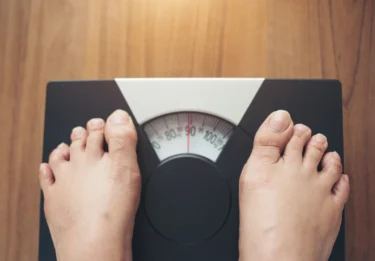
Research[3] shows that uric acid levels correlate with an individual’s body mass index (BMI) and metabolic syndromes (heart diseases, diabetes, etc.). Weight management through dietary modifications and exercise might help reduce the uric acid levels in the blood. Furthermore, a gradual weight loss might be more helpful for uric acid levels than drastic changes.

Activities like sunbathing and exercise-induced profuse sweating, which lead to dehydration, might cause an increase in uric acid levels. Thus, dehydration might be a factor leading to a high uric acid level and a gout attack. Therefore, your doctor might suggest that you drink plenty of water. The recommended daily intake of water is six to eight glasses, which might change according to the weather conditions and daily activities[4].

Food containing purine may or may not lead to an increase in uric acid. A study[13] conducted from 1988-1994 showed that high consumption of seafood and meat causes a rise in uric acid in the blood. Another study[5] on 45,000 men over 12 years showed that a moderate intake of vegetables rich in purine, like peas, lentils, asparagus, etc., did not increase uric acid. Therefore, your doctor will recommend a proper diet to decrease high uric acid levels.

Sweetened beverages or soft drinks contain fructose. Fructose is one of the most commonly used sugars. Increased intake of sugars, high-fructose corn syrup, etc., has led to the occurrence of new-age diseases, like diabetes, obesity, etc., including high uric acid (hyperuricemia) and gout. Therefore, avoiding such beverages might help check uric acid levels in the body[6].
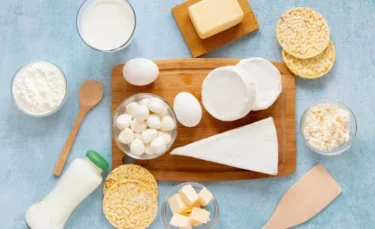
Choi et al. [7] conducted an epidemiological study to find that dairy products might have the potential to help decrease uric acid levels. It might also decrease the risk of gout. The mechanism of action is still not clear. However, the activity of milk in lowering the serum uric acid level was noted in comparison to soy. In another study[8] by Kurajoh et al., they hypothesised that milk might also facilitate the excretion of uric acid by increasing its urinary clearance.
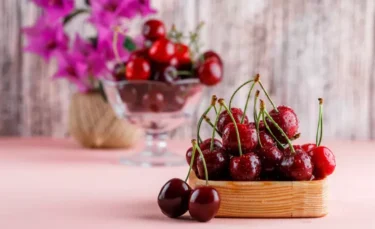
Based on anecdotal evidence[9], cherries have been used for decades for gout treatment. In 1950, Blau noticed that his gout pain subsided after eating some cherries. Thus began the investigation of cherries and their potential for gout. Several studies found that the potential antioxidant (free radical neutralizing) and anti-inflammatory properties of cherry and cherry juice might be helpful in gout. A significant reduction in gout attacks (by 35%) was seen in a study[10] containing 633 patients. Therefore, cherries might be helpful for gout and uric acid.
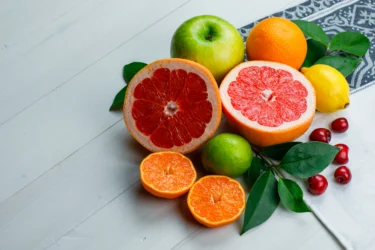
A decrease in the uric acid level, probably due to its increased excretion, was seen as a result of vitamin C supplementation in a study. Another study[11] containing 46,994 men over 20 years showed a positive correlation between serum uric acid level and vitamin C intake. It was seen that the subjects taking vitamin C had a lower risk of developing gout. This finding might be due to its potential antioxidative properties. Therefore, vitamin C might help lower uric acid levels in the blood.

A recent development[12] showed that there might be a relationship between stress and uric acid. Daily emotional stress might lead to an increased uric acid level in the body. Therefore, it might be suggested to manage stress using various time management methods and seek help when required.
Though studies show the benefits of the given herb and home remedies in the condition, these are insufficient. There is a need for large-scale human studies to establish the true extent of the benefits of these home remedies on human health. Thus, these should only be taken cautiously and never as a substitute for medical treatment.
In the absence of symptoms, high uric acid is not a condition or a disease that is actively looked for by doctors. However, high uric acid may lead to gout or kidney stones. Suppose you have gout symptoms or kidney stones; your doctor might ask for a blood examination. The blood examination may or may not reveal high uric acid.
If you are concerned that the current medication you’re taking might lead to high uric acid, you should talk to your doctor. However, ensure that you do not discontinue, replace, or make any amendments to any ongoing treatment. Kindly consult a doctor.
You must not rely on home remedies alone for the treatment of the condition and should consult a qualified doctor for any advice on the condition if the symptoms do not improve with home remedies.
Also Read: 8 Best Home Remedies For Piles
A high uric acid level is not a disease or a condition that requires active monitoring or long-term treatment. Most people might not even have any symptoms. However, high uric acid might lead to gout and kidney stones. These might have symptoms such as pain, swelling, redness, etc. (in gout) and pain in the flank, vomiting, etc. (kidney stones). However, there are lifestyle modifications or dietary changes like avoiding purine-rich foods, and increasing water intake, including dairy products and cherries in your diet, etc. that might help reduce excess uric acid.
Cherries have been used for ages for gout. It may have antioxidant and anti-inflammatory properties, which might help with gout. However, its potential use for uric acid reduction is not known. Kindly consult a doctor.
Vitamin C might help reduce the uric acid levels in the body. This might be due to its potential antioxidant activity. However, more research is required to prove its possible use.
No, there are no reports of bitter gourd as a home remedy for high uric acid.
Disclaimer: The information provided here is for educational/awareness purposes only and is not intended to be a substitute for medical treatment by a healthcare professional and should not be relied upon to diagnose or treat any medical condition. The reader should consult a registered medical practitioner to determine the appropriateness of the information and before consuming any medication. PharmEasy does not provide any guarantee or warranty (express or implied) regarding the accuracy, adequacy, completeness, legality, reliability or usefulness of the information; and disclaims any liability arising thereof.
Next Page »« Previous Page